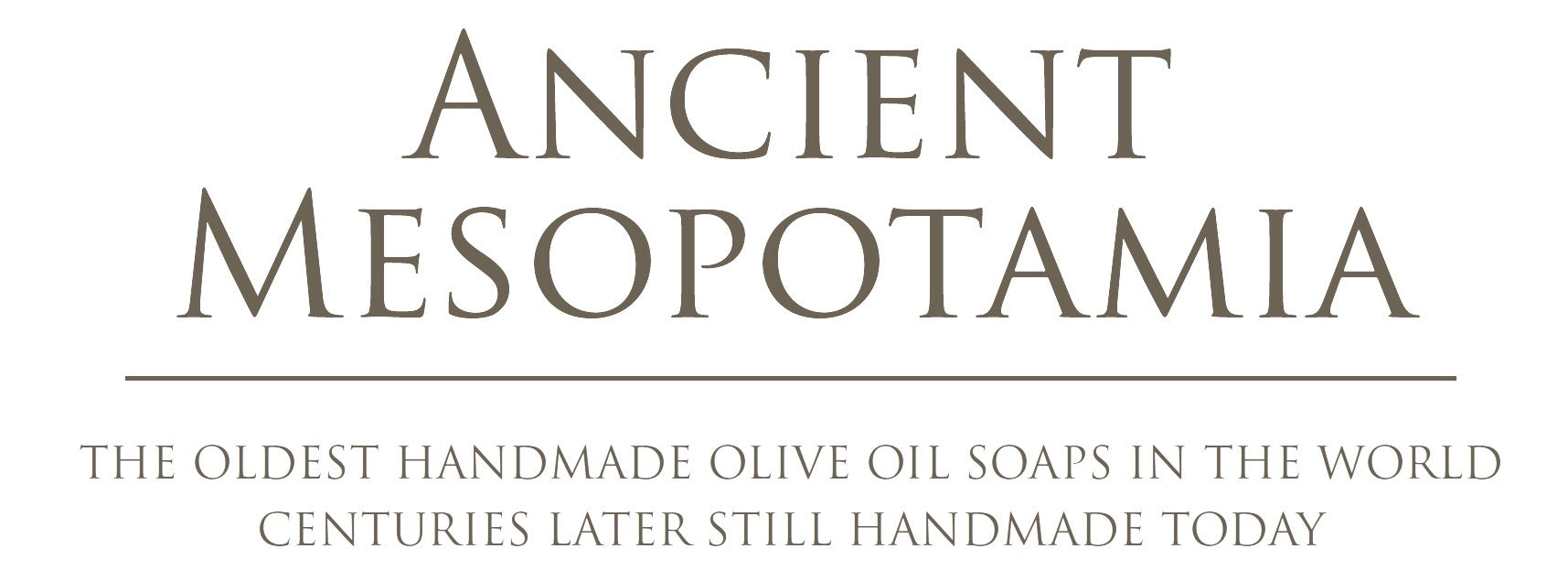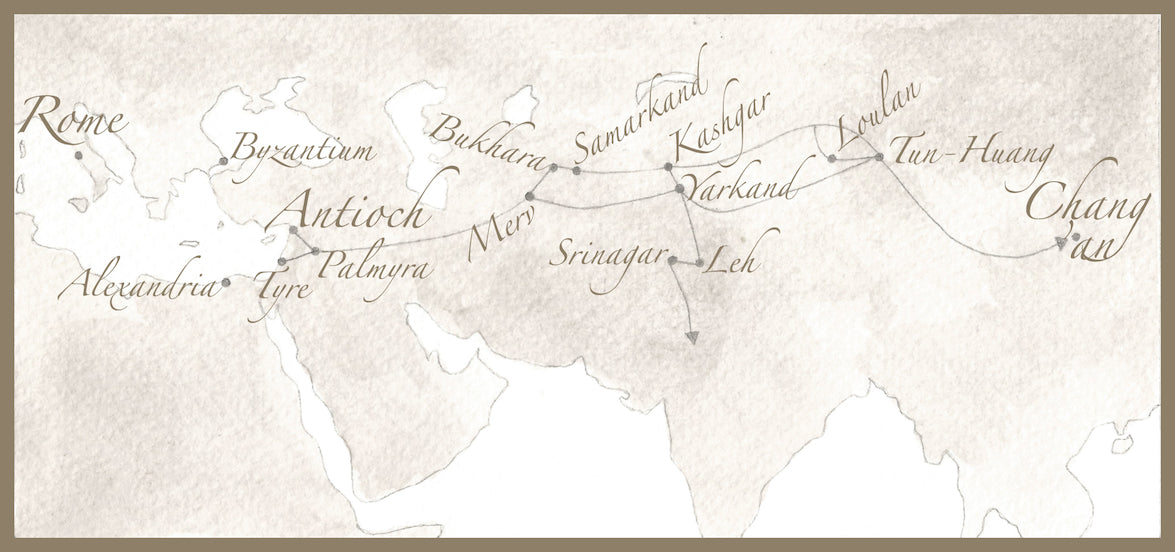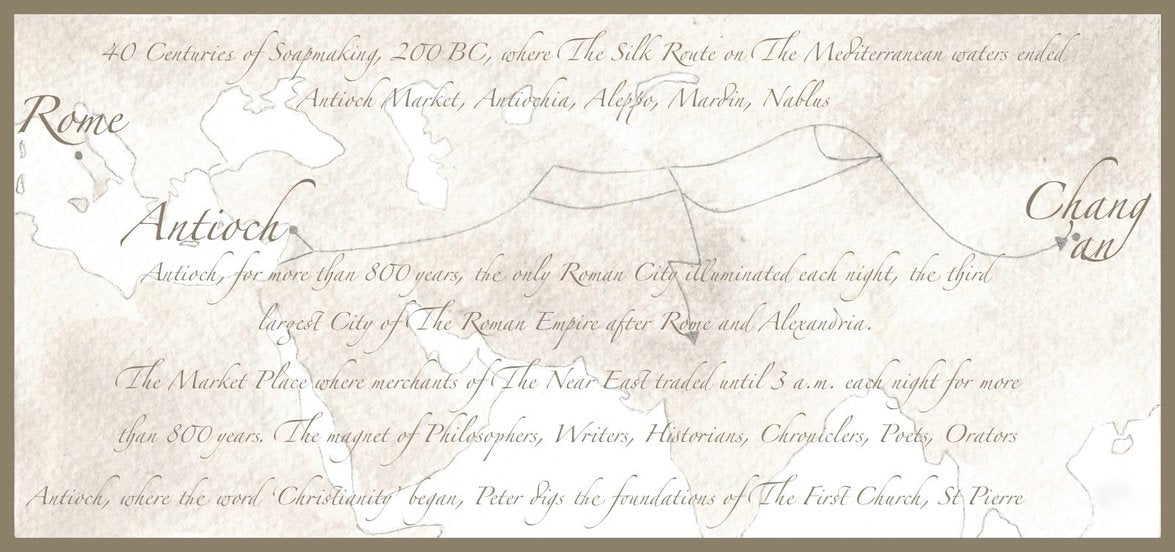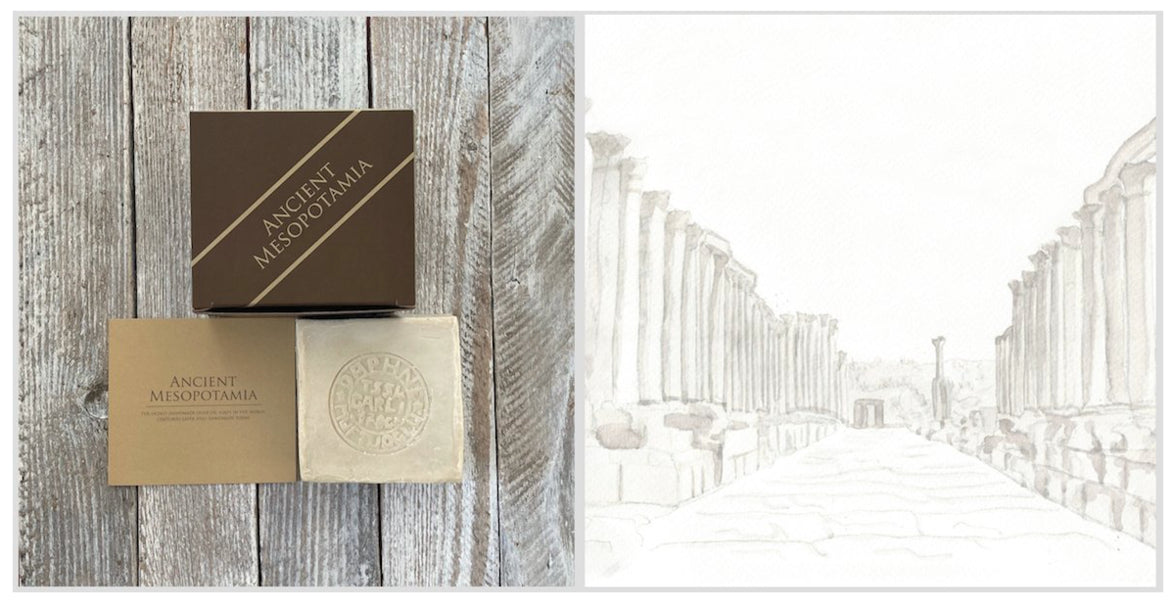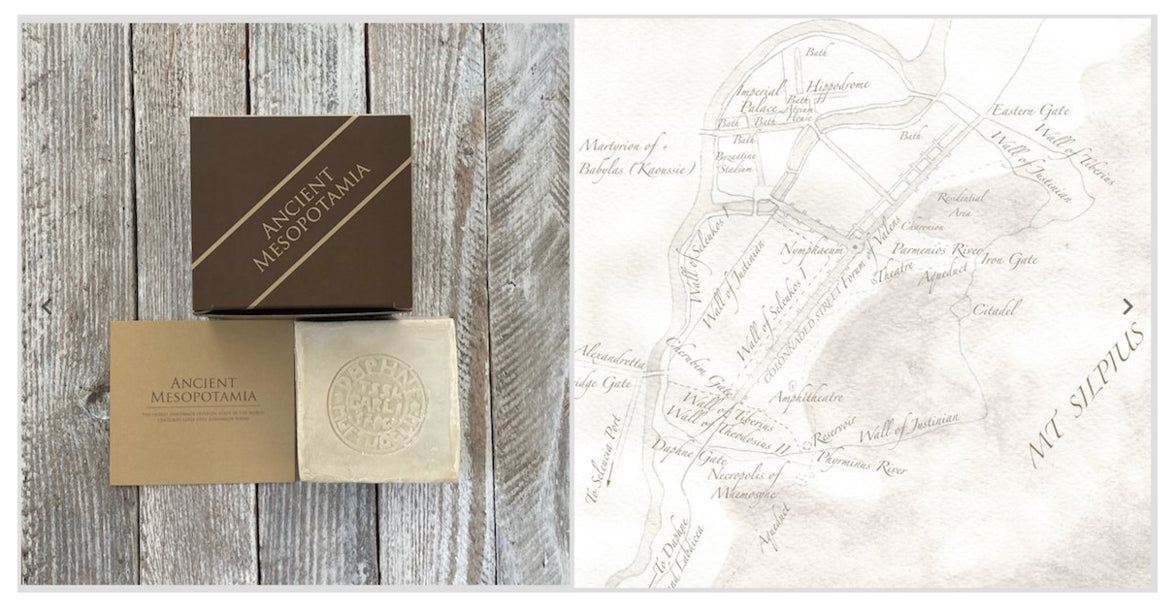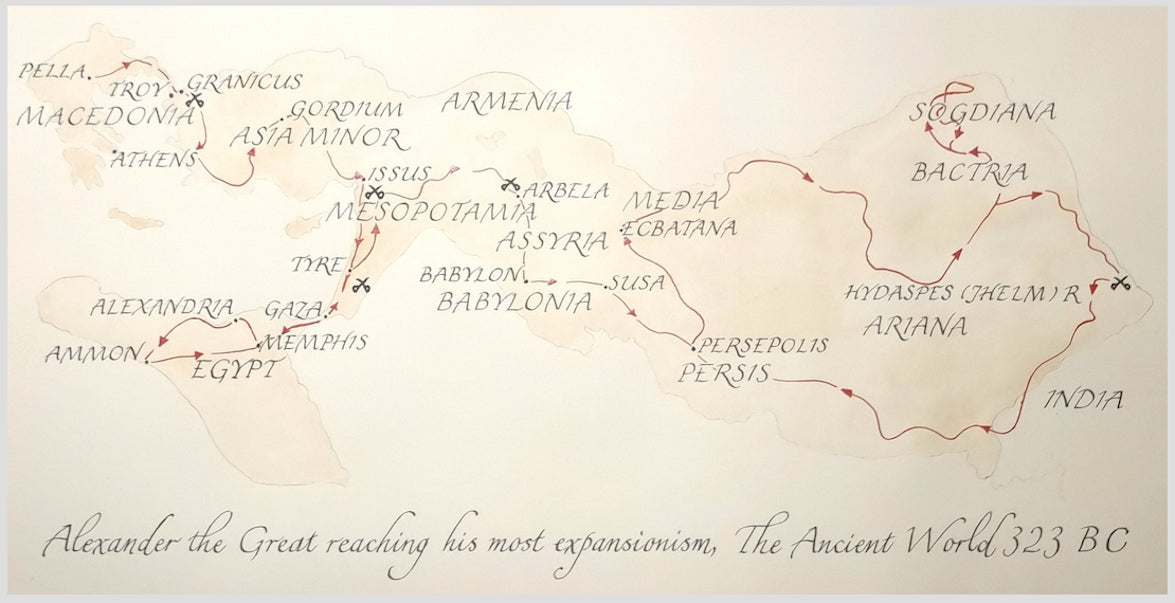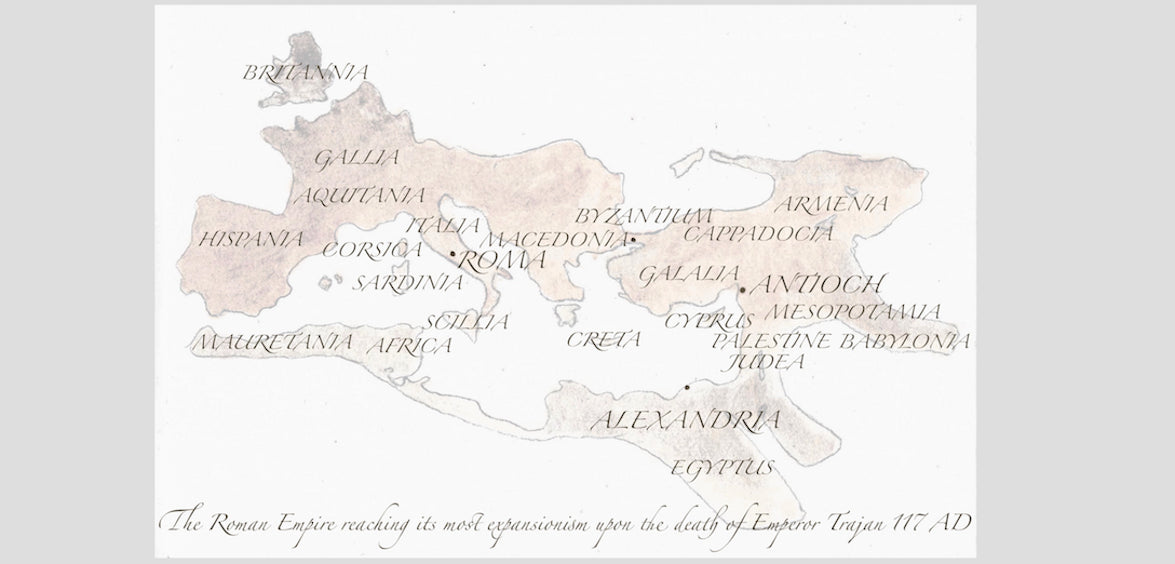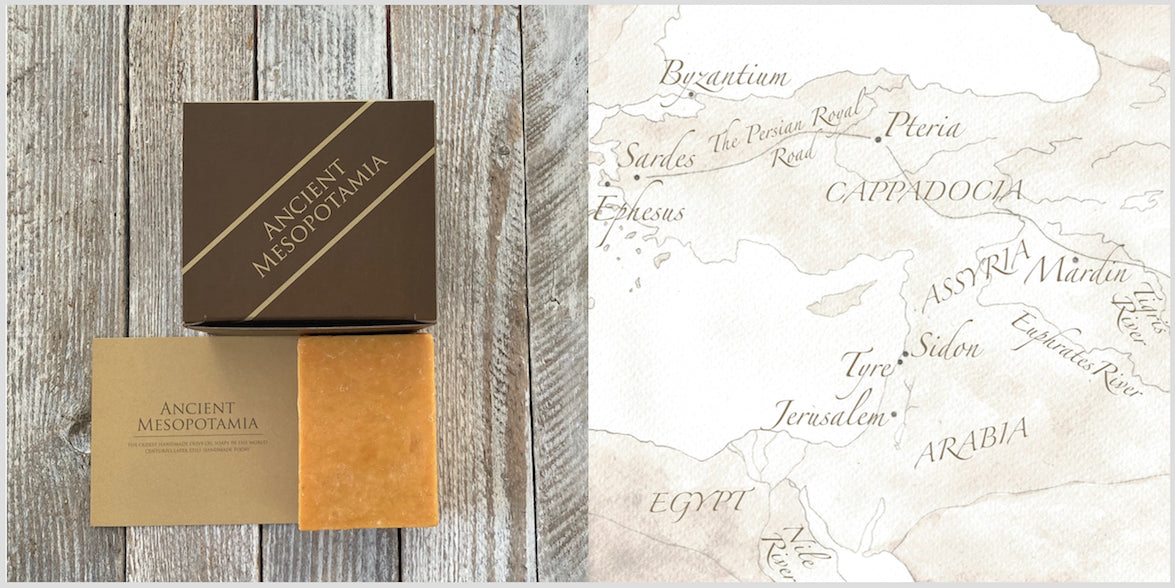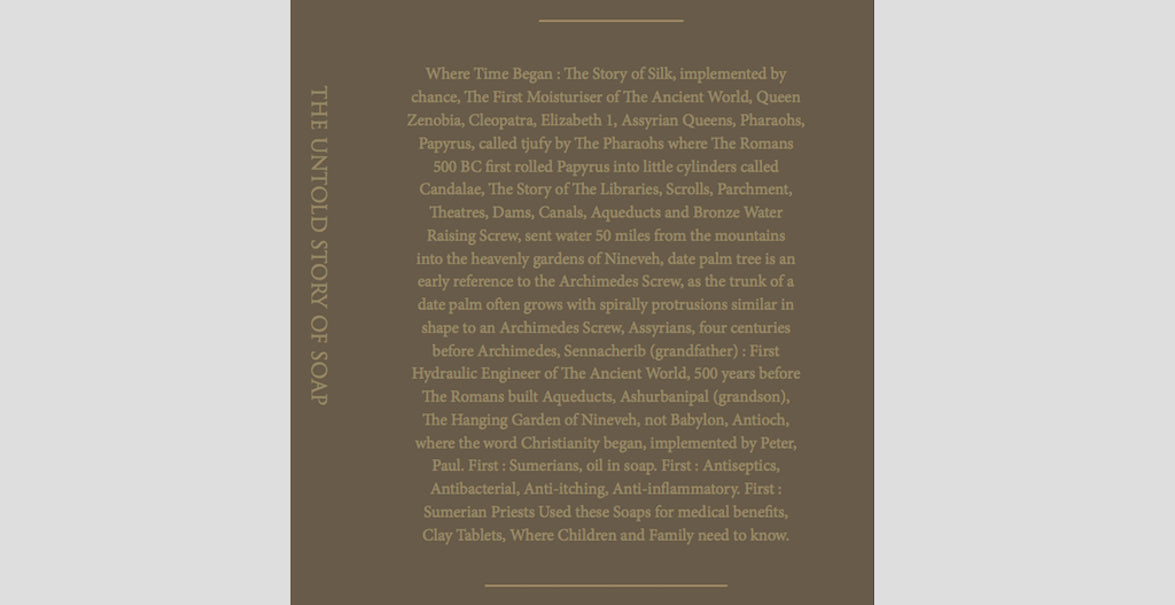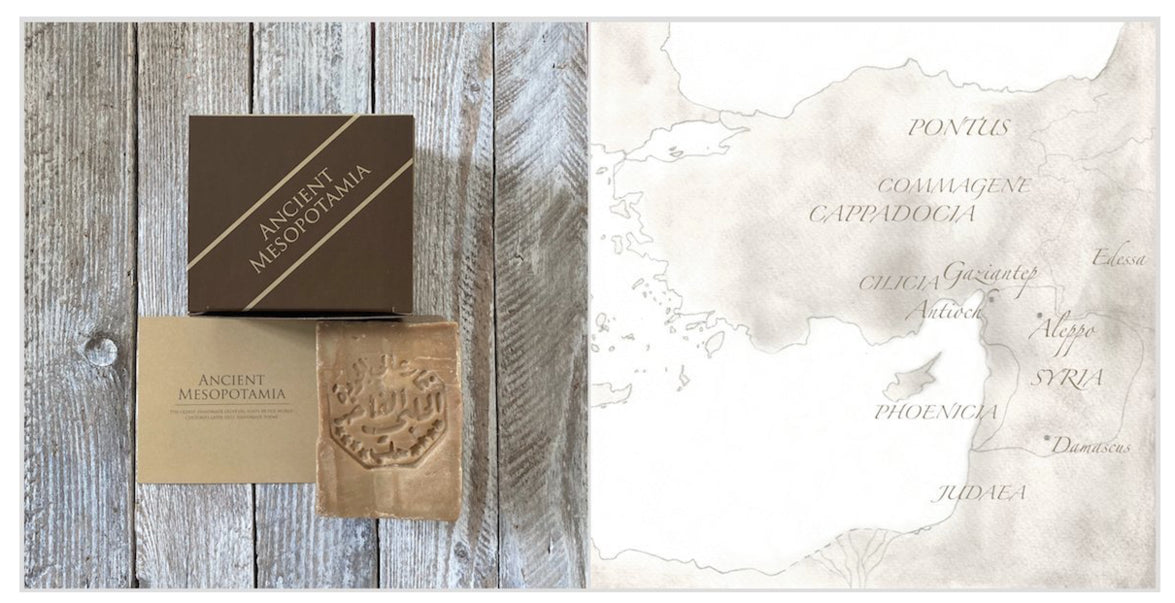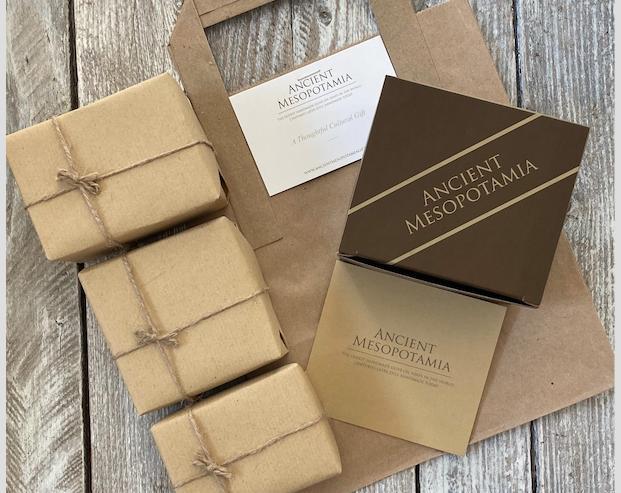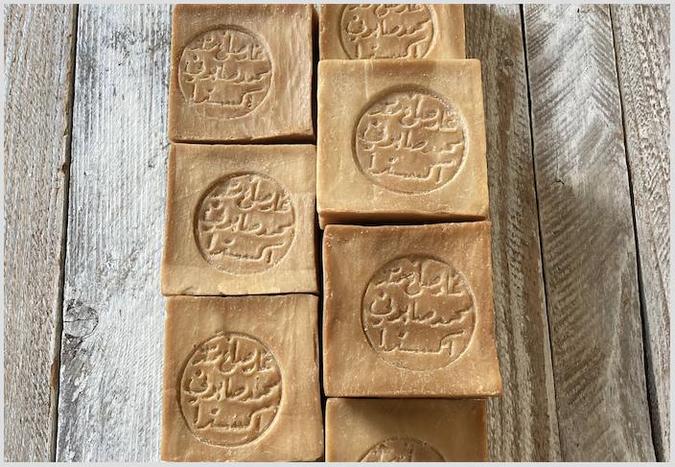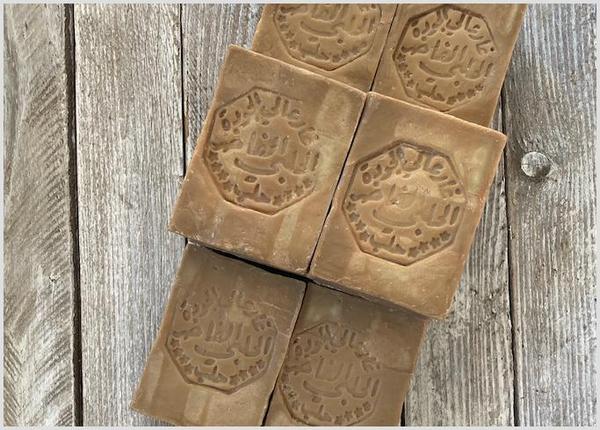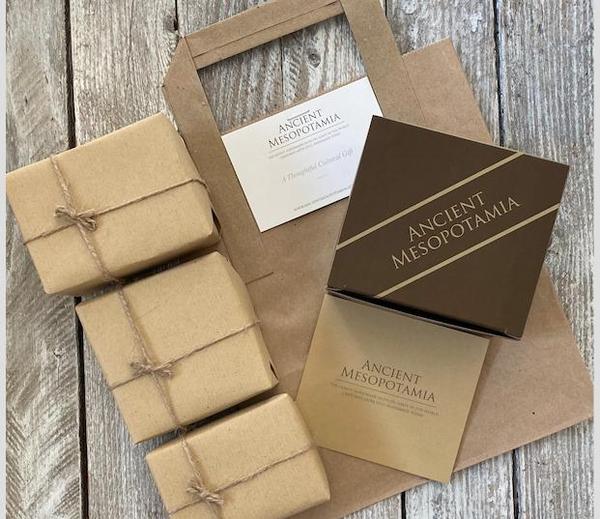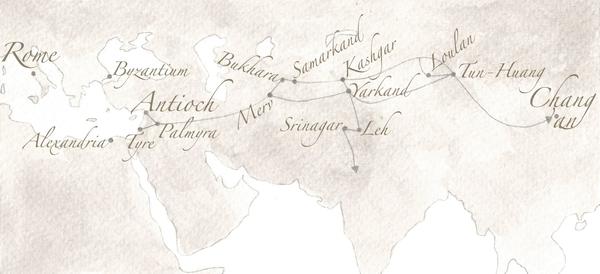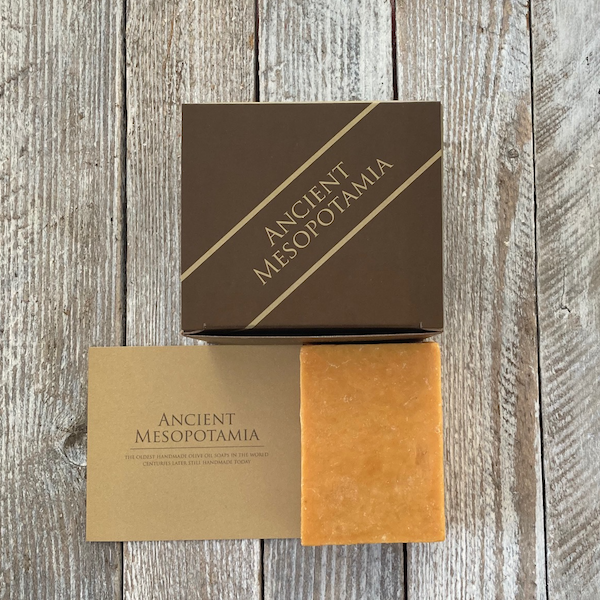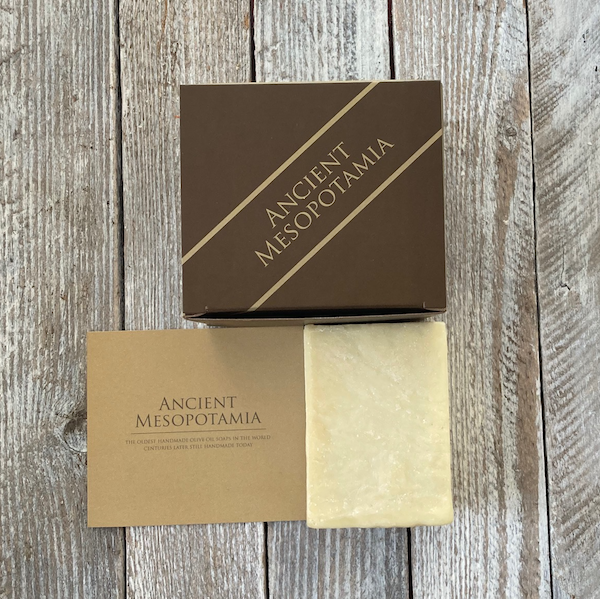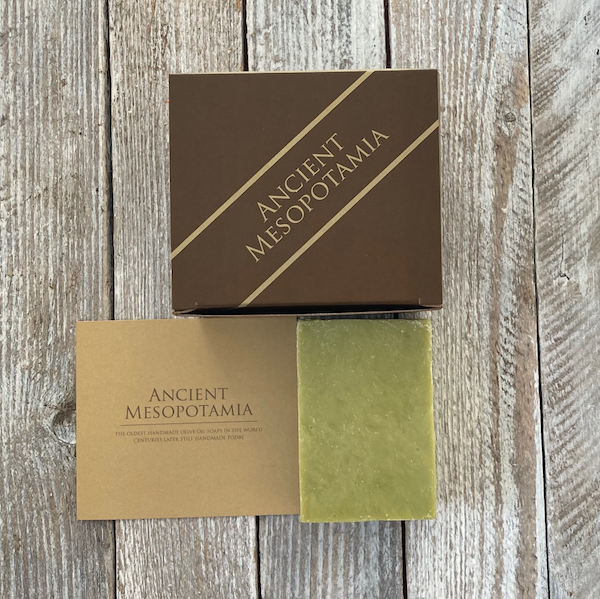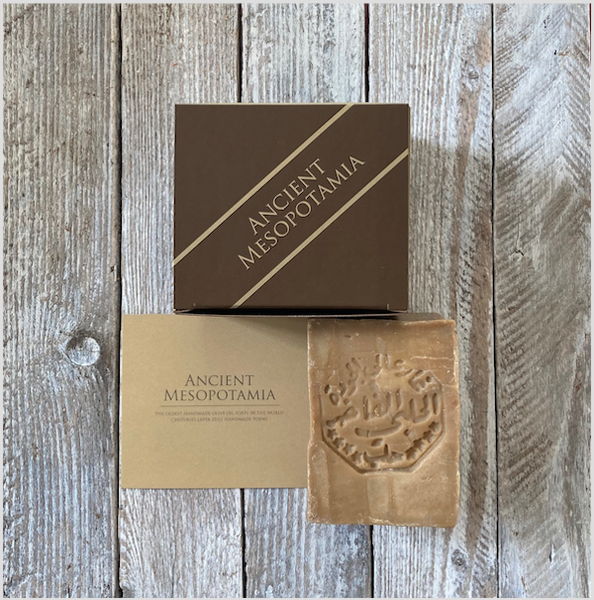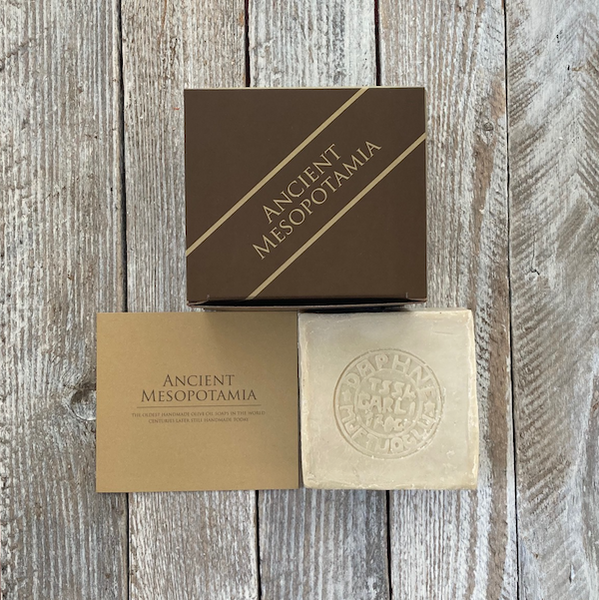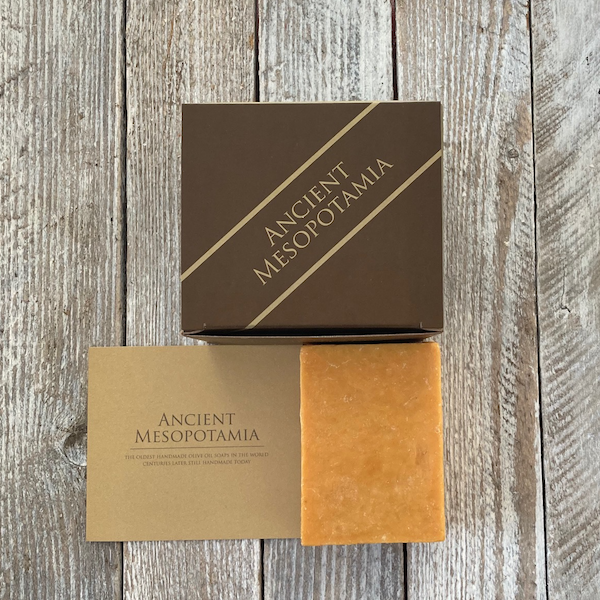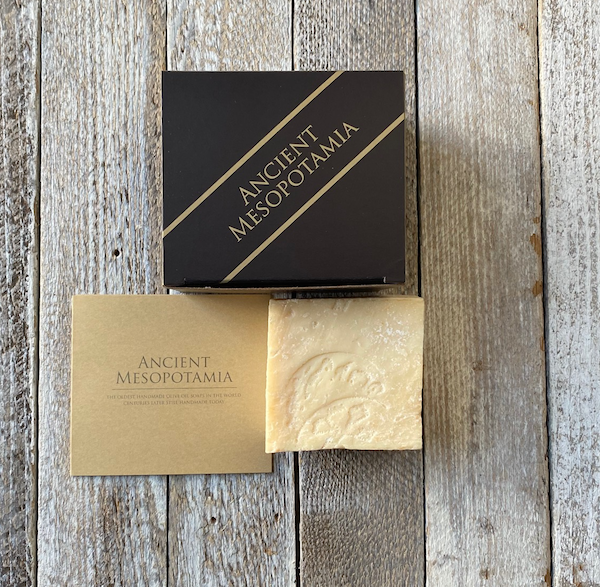Cultural
Store
-
Company
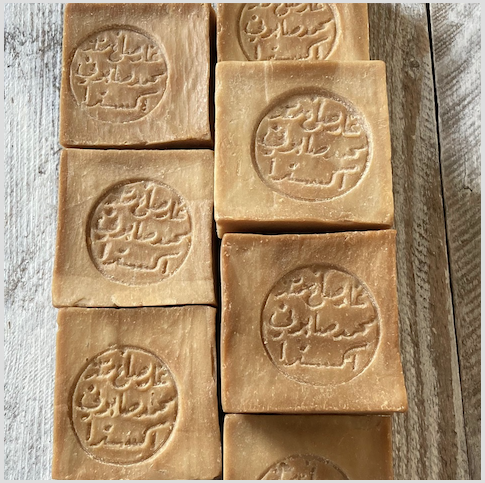

Soap, has saved more lives than Penicillin, enabling our existence. Procopius, portrays Empress Theodora, as a wonton of the promiscuous sort, involving her naked body, some grain and a gaggle of intellectual trained geese. Babylonian, Trigonometric Table, 1000 years before Pythagora's Theorem. Pharos of Alexandria, the blazing inferno 393 feet, each night for a 1000 years. Archeaologist, Kathleen Martinez digs sand, 43 feet beneath The Mediterranean Sea, searching for Cleopatra. Persian Mathematician Al-khwarizmi, calculating, by completion, balancing, Algebra, still today. 500 BC, The Romans first rolled Papyrus into little clylinders called Candalae, Ziggurats, more than a thousand years before The Pyramids, Natron, a naturally occurring Salt found in Wadi el Naturn, Dessert, West of The Delta Nile, enabling Tutankhamun's enbalming, Göbekli Tepe, settlements in Groups of 40, 11,500 years, George Smith Translates Clay Tablets : The Tower of Babel, Tower of Belus, Galen of Pergamum, discovers that Urine was formed in the Kidneys and Arteries carried Blood, Darius 1, receives Gifts from The Assryians dragging Timbers from Phoenicia to Persepolis, building The Apādana Palace, Babylonians contributed with Brick Building, Egyptians, offering Ivory, Gold Building, Parchment, implemented by The Pergamums, Sennacherib, builds an Under Water Aqueduct at Arbela, with a shaft to the surface, at intervals, high quality Water !

9,500 BC The Plain of Mesopotamia, Wild Wheat Grass. The Sumerian word for wheat was 'she-gib-ba' meaning 'the dark grain'. Mesopotamia, the original home of bread-making wheats.Waldi el Naturn, west of The Delta Nile, 75 feet below sea level, 125 feet below The Nile, Natron, used as a desiccant in the Mummification process, Embalming, 2500 BC, the lost Palace, Temple of The Kings of Girsu, Bridge built of baked brick, still today, Theodora, first campaigner of Women's Rights, abolishing a law that allowed Women to be killed for committing adultery, the term Palestine was originally a designation of an area of land in southern Cannan, Philistines (sea people) 1276 BC, the impressive Persian Administrator, Darius 1, Shahanshah, The Kings Pirradazis, first postal system of decrees, The City of Antioch, lit-up with vegetable oil filled lamps for 800 years, The Library of Alexandria, The Library of Celsus, Ephesus, Algorithm, latin, from the name of Al-Khwarizmi, Persian Mathematician, Algebra, still today, the great Theatre of Ephesus, seating 25000, where Paul preached, Lysimachus, digs into the mountainside for 60 years, Genesis, the source of the four tributaries : Pishon, Gihon, Tigris, Euphrates, the Biblical land known as Ancient Mesopotamia, perhaps, The Garden of Eden.
Where Time Began : The Story of Silk, implemented by chance, The First Moisturiser of The Ancient World, Queen Zenobia, Cleopatra, Elizabeth 1, Assyrian Queens, Pharaohs, Papyrus, called tjufy by The Pharaohs where The Romans 500 BC first rolled Papyrus into little cylinders called Candalae, The Story of The Libraries, Scrolls, Parchment, Theatres, Dams, Canals, Aqueducts and Bronze Water Raising Screw, sent water 50 miles from the mountains into the heavenly gardens of Nineveh, date palm tree is an early reference to the Archimedes Screw, as the trunk of a date palm often grows with spirally protrusions similar in shape to an Archimedes Screw, Assyrians, four centuries before Archimedes, Sennacherib (grandfather) : First Hydraulic Engineer of The Ancient World, 500 years before The Romans built Aqueducts, Ashurbanipal (grandson), The Hanging Garden of Nineveh, not Babylon, Antioch, where the word Christianity began, implemented by Peter, Paul. First : Sumerians, oil in soap. First : Antiseptics, Antibacterial, Anti-itching, Anti-inflammatory. First : Sumerian Priests Used these Soaps for medical benefits, Clay Tablets, Where Children and Family need to know.

Temple of Artemis, Ephesus 550 BC, built by Croesus, King of Lydia, rebuilt, after being burned down by the madness of Herostratus 356 BC and others, 150 feet wide, 300 feet long, 127 Ionic columns, the whole of the building was constructed in marble. The Statue of Artemis which, was removed during a fire, is exhibited at The Ephesus Museum, 1869 Archaeologist, John Turtle Wood on behalf of The British Museum discovered 20 feet under sand the remains of The Temple of Artemis, excavations continued until 1874 sending precious sculptures and archaeological items to The British Museum. Considered number one, Seven Wonders of The Ancient World. 1904-1905 David George Hogarth on behalf of The British Museum excavated with success, finding the foundations of The Artemision. The chronology of construction was now established, the remains of The Temple were transported to The British Museum.
The Mausoleum at Halicarnassus a tomb built 353 - 350 BC located at Halicarnassus, Lydia, two hours drive from Ephesus. The Tomb was built for Mausolus, the ruler of Halicarnassus and his wife. The Mausoleum, 148 ft high, marble four sides were richly adorned with sculptural reliefs. One of The Seven Wonders of The Ancient World.
Unesco World Heritage Sites, LydiaAncient Mesopotamia : THE UNTOLD STORY, THE ANCIENT NEAR EAST, MORE UNTOLD THAN WE THOUGHT, 40 centuries of soapmaking, still making history, still today, please scroll down. A biblical presence of the world’s first Olive oil, Pistachio oil, Laurel Berry oil and Almond oil soaps traded on The Silk Route, 2nd century BC -14th century AD (when the Ottoman Empire boycotted trade with the west and closed the route), all other Routes on The Silk Route stayed open for Trading until the 16th century, continuing where the first sophisticated civilisation of the world started, WHERE TIME BEGAN. Ancient Mesopotamia's collection of these imported cultural soaps are skilfully made by hand, hand-cut, dried stored for months reducing moisture content making the soap hard and long lasting with the original ingredients unchanged for 40 centuries, remarkably today, still being handmade from the same historical areas, as the Soapmakers continue making history. The Silk Route, The Soapmakers, all from the area of Ancient Mesopotamia, The Fertile Crescent. Antiochia, Queen Zenobia's preference. Aleppo, laurel berries received daily from Antioch for 300 years, favoured by Queen Cleopatra and Queen Zenobia. Mardin : The Persians, Assyrians and Romans allowed the Soaps to travel (the abundance of Pistachios and Pistachios with kernel of the apricot favoured by Assyrian Queens and Princesses for their hair), Almond, Aristocracy, Romans and Greeks preference at Antioch. The profusion of olive tree plantations at Antioch in the 4th Century AD and 5th Century AD. Nablus Soapmakers began in the 7th Century AD, the families increased through popularity, from the 10th Century the first pressed olive oil was made from the finest ancient olive groves in the world (five thousand years old, still today) Nablus, Palestine, The Fertile Crescent (the preference of Elizabeth 1). 40 centuries of soapmaking, used by The Emperors, Kings, Queens, Princesses, Pharaohs and the wealthy, two thousand years before The Silk Route opened, centuries later, still handmade today.
Pliny the Elder, friend of Emperor Vespasian, known for his writings 77AD 'Naturalis Historia', other writings advising on woman's cosmetics : asse's milk removes wrinkles, butter mixed with white lead useful against acne and cows placenta recommended for removal of facial ulcers and he describes soap as 'An invention of The Gauls for giving a reddish tint to the hair' (made of tallow, ash). Whilst in Antioch he observes laurel berries were being loaded onto donkeys daily for the constant journey to Aleppo but, he never completed the question 'why'. Oil in Soap was an incredible expensive luxury and historians have never paid any attention to it and clearly only referred to the oil and strigil, the mystery of why oil in soaps never went to Rome ( The Romans omitted the history of The Sumerians discovery of Oil in Soap, Sumerian Priests used oil in soap for medical benefits, written on clay tablets and The Romans chose to ignore, as they could not afford these Moisturisers themselves ). The continuing Untold Story of Oil in Soap for 40 centuries, has saved more lives than penicillin, the greatest medical discovery in human history, still today. Sumerians : The concept of Time. Sumerians : Oil in Soap.
ANCIENT MESOPOTAMIA : continuing the ethical and sustainable ethos, the culture and spirit of the first Soapmakers of the world remarkably, 40 centuries later, still handmade today from the original historical areas whilst supporting their families.
SOAP : the greatest medical discovery in human history, cleans away something you cannot see, soap does not attract germs, water does. UNICEF : doctors wash their hands half as frequently as they should, if every cook used soap it would cut the world’s rate of respiratory infections by 25%. Soap has saved the live of a healthy person oblivious to the bullet they have dodged, has saved more lives then penicillin, enabling our existence, doesn't just make cities healthier, it makes them possible, enabling our existence.

Susa - Sardes : 1,677 miles, 111 stations (caravanserai) on the heavily guarded Persian Royal Road.
Mardin : Pistachio, Laurel Berry Oil : Olive Oil, Laurel Berry.Mardin suffered tremors and aftershocks but, City is safe 6th February 2023, 7.8 Mw.
MARDIN : located on The Silk Route, The Persian Royal Road, the oldest City in Upper Mesopotamia, Göbekli Tepe, Unesco World Heritage Site, where humans have existed for 11,500 years, 115 centuries, the first farming communities of the world, Upper Mesopotamia, Mesopotamia. Mardin, the open museum, Unesco Tentative Listing, 4500 BC with the most preserved architecture in the world, where The Persians, Assyrians and Romans allowed the Soaps to travel. The ochre sunset of Mardin, where olive oil, pistachio oil, travelled on The Persian Royal Road, where Persian Sogdian Traders travelled on The Silk Route and spoke the language of Sogdiana for hundreds of years from Chang'an (Han Dynasty), Samarkand to Antioch (The Roman Empire), the preference of King Charles 111. The Province of Mardin, Dara, three miles from the Persian border of Nisibis, founded in 505 AD. EMPEROR ANASTASIUS builds a city, where masons were summoned to build the last Roman Fortress 114 feet tall : great storehouses, palaces, churches, bazaar, houses, reservoir, water channels and graves of the Roman warriors wrapped around a two and a half mile wall 'Anastasiopolis'.
EMPEROR JUSTINIAN 1st 527-565 AD rebuilds and strengthens the last Roman Fortress, Wife Theodora, exceptionally beautiful, intelligent, Empress, ruled with Justinian 1st for 21 years, a woman from a poor background. Theodora had grown up among the working classes of Constantinople (330 AD the new Capital of The Roman Empire, lasting 12 centuries) previously, Ancient Greek City of Byzantium, four times the size of Byzantium, built on seven hills, just like old Rome), she was a child of the circus who became Constantinople's best known actress. Theodora loved the male, female baths and frequented them often, early in the morning and leaving late. The mixed baths (where olive oil and alkali (ash) was used) ended in the 8th century AD. Procopius, Writer, Greek Scholar, Principal Byzantium Historian of the 6th century AD portrayed Theodora as a wanton of the most promiscuous sort, sighting a stage act that the future Empress was said to have performed involving her naked body, some grain and a gaggle of trained geese. Justinian 1st passed a law allowing intermarriage between social classes, his marriage to Theodora caused a scandal but, she became one of the most influential women of the Ancient World. Justinian wanted to restore Rome to its ancient glory. Plague 541 AD, 50 per cent of the population died, conflict with Sassanids, Goths. However, legendary General Belisarius had recaptured lawlessness 534 AD in Africa, giving access to African grain, gold flowed again into the Imperial Treasury. Procopius recorded 10000 people a day were now dying from the plague. Two christian Nestorian Monks from the east persuaded Justinian that Silk could be made in Greece. They journeyed back to the east and hid Silkworm Eggs in bamboo staves packed with straw to keep them dormant, upon returning to Constantinople, the eggs were hatched. However, China still produced the high end quality silk, a class distinction. The earthquake of earthquakes 526 AD Antioch, Theodora ensured the fine Church of St. Michael and The Basilica of Asterius were rebuilt despatching marble columns from Constantinople (first campaigner of women's rights), she worked for the rights of prostitutes, closing brothels, safe houses, forced prostitution, changed the law on divorce, abolished a law that allowed women to be killed for committing adultery. Mardin Soap : two thousand years before The Silk Route opened, 40 centuries of soapmaking, still handmade today remarkably, from the same historical area.

ALEPPO, 64 BC a Roman Province : Soapmakers continue making history two thousand years before The Silk Route opened remarkably, still being handmade today in Gaziantep, on the Silk Route, just miles over the border from Aleppo City, where laurel berries were received daily from Antioch for 300 years. Aleppo, the preference of Queen Cleopatra and Queen Zenobia. The mixture of olive oil, water and lye; underground fires begins the process heating the oil for 3 days for the oil to react with the lye and water, creating a thickness thereafter, adding laurel berry oil. Pouring the mixture over a sheet of waxed paper awaiting ageing, chemical changes for the cutter's hand and stamped seal. Reactions with the air gently turning the soap gold on the outside and mystical emerald green on the inside, reducing moisture content making the soap hard and long lasting. The Aleppo Soapmakers : still handmade today in Gaziantep on The Silk Route, 40 centuries of soapmaking, ensuring same weather pattern as Aleppo, continuing making history, just miles over the border from Aleppo City. Aleppo : Unesco World Heritage Site, once ruled by Hittites, Assyrians, Akkadians, today, continuing to stay on the 'The List of World Heritage in Danger'. Postscriptum : Aleppo Soapmakers, now back in Aleppo, continuing making history.
East Anatolian Fault : Aleppo, completely destroyed 6th February 2023, 7.8 Mw. However, Aleppo Soapmakers continue making history.
East Anatolian Fault : 11th October 1138 AD, Aleppo earthquake, 200,000 lost their lives.

East Anatolian Fault : Museum Hotel (Antioch), one of the few buildings standing 30,000 objects,largest Roman Empire floor mosaic and all other objects safe, 27 feet underground, Hotel above safe, 6th February 2023,7.8 Mw. The Museum's Director rushed to The Museum with all Staff, Restorers and Staff from all other Museums in Turkey helping to collect all moveable objects. The only damage, cracks in ceiling plaster, now being replaced. Update : further checking of Bolts is being monitored on the building and is on going !
PLEASE NOTE : Update : Ladies Co-operative : Syrian Ladies, Ladies from Mardin join forces to continue history of producing 'The Antiochia', The Laurel Leaf ! as Antioch continues to suffer, Earthquake, 6th February 2023 !
ANTIOCH, 64 BC a Roman Province : the third largest City of The Roman Empire, after Alexandria and Rome on The Silk Route, 1,100 acres, the only Roman City illuminated at night for hundreds of years. Third century AD, The Imperial Palace residence of Queen Zenobia (Antiochia, the preference of Queen Zenobia, just a short walk from the Soapmakers), Queen of Palmyra Empire, Queen of Syria, Queen of Egypt, ruler of one third of The Roman Empire (6 years, loved by her people). Libanius, Antioch's celebrated Orator, born Antioch 314 AD, a Greek teacher of rhetoric of the Sophist School who tells the story of the City being illuminated each night 'People of Antioch were sleeping on the roofs at night where the summer breeze would gently stir the garments of the sleepers,' favoured by The Emperors, the centre of literature, the romantic magnet for scholars, writers, philosophers, the marriage of Antony and Cleopatra 37 BC, (Aleppo, the preference of Queen Cleopatra, where Antony establishes Antioch as his Headquarters), the park of woods at Daphne (Daphne : ancient Greek meaning laurel, spoken in Ancient Antioch), known for its plethora of thickly planted mulberry bushes, groves of cypresses and laurels forming a dramatic continuous roof, the carpet of rose groves interspersed with streams five miles from Antioch leading down to the Mediterranean waters. Antiochia Soap : two thousand years before The Silk Route opened, 40 centuries of soapmaking, still handmade today remarkably, from the same historical area.
Incredible Princeton University, led by Professor George W. Elderkin 1932-1939, as lead University, excavating 'Antioch', 'Daphne', Three hundred storage boxes, trays, coins, numismatic collection, Firestone Library. Princeton University 'Antioch' website. Princeton University Art Museum.
Harvard Museum, The Ancient Near East, housing more than 40,000 archaeological artifacts.
Yale, Babylonion Collection 45,000 artifacts.
Penn Museum, Philadelphia, 35,000 cuneiform tablets, 90,000 artifacts, The Ancient Near East.
The clever Books of The Ancient Near East by Professor Amanda Podany.
Not forgetting, The ISAC Museum, The University of Chicago, 350,000 Artifacts !
Continuing the enrichment of History : The British Museum, Musée du Louvre, Met Museum.
East Anatolian Fault : December 13th, 115 AD 260,000 lives lost, Antioch. Emperor Trajan had just returned to the City and escaped to the Hippodrome, Circus. He built a new aqueduct under 4 miles to replenish water for the City which, was completed by Hadrian.
East Anatolian Fault : 29th March, 526 AD 250,000 lives lost followed by 18 months of aftershocks. Emperor Justinian 1st, Empress Theodora : The earthquake of earthquakes Antioch, Theodora ensured the fine Church of St. Michael and The Basilica of Asterius were rebuilt despatching marble columns from Constantinople.

NABLUS, PALESTINE 63 BC a Roman Province : the world's most ancient olive groves, a Unesco World Heritage Site, Central Highland area of Nablus, Battir to Hebron, seven natural springs, The Roman Empire (10th legion) channels and pools irrigate, centuries later, still worked today, continuing making history. Nablus Soapmakers began in the 7th Century AD, the families increased through popularity, from the 10th Century the first pressed olive oil was made from the finest ancient olive groves in the world ( five thousand years old, still today). Local lime, ash (ashes of the Barilla plant from the salty banks of the River Jordan, soda making qualities of Barilla seaweed ) are pounded into a powder, the pure olive oil soap mixture is gently heated and continuously stirred over many days in copper vats, then spread out to set, soaked in red vegetable pigment, a grid of woollen threads leaves its imprint, as the process of lines are established for the cutter's hand, whilst the stamped seal of the two crossed keys completes the process; Nablus Palestine,The Fertile Crescent (the preference of Elizabeth 1) and popular with Jordanian Families, Nablus Soap, remarkably, from the same historical area since the 10th century.
PALESTINE in the ancient world was part of the region known as Canaan where the Kingdoms of Israel and Judaea were located. The term `Palestine’ was originally a designation of an area of land in southern Canaan the people were known as Philistines (sea people). The Philistines are thought to have come to the area towards the end of the Bronze age c. 1276 BC and established themselves on the southern coastal plain of the Mediterranean Sea in an area afterwards known as Philistia. The whole of the region was referred to as ‘Canaan' in Mesopotamian texts and trade records found at Ebla and Mari as early as the 18th century BC while the term ‘Palestine' does not appear in any written records until 430 BC in the Histories of Herodotus. Later, the term ‘Palestine' came to be used for the entire region which was formerly known as Canaan.

Neapolis of Samaria, Flavia Neapolis, 'Nablus', The New City, 72 AD, Emperor Vespasian. From olive groves, 5000 years, still today.
ANTIOCHIA, ALEPPO, Laurel Berry oil (not seen in the West) with the perfect percentage of Olive oil. Antiochia, Aleppo both assist gardeners, eczema, dermatitis, rosacea, psoriasis. Both natural moisturisers, antiseptic, anti-itching, antibacterial, anti-fungal, assisting problematic skin, calming sensitive skin, leaving skin soft, nourished and silky. Ancient Mesopotamia products contain no perfumes, artificial colours or, preservatives, 100% biodegradable and not tested on animals. Ancient Mesopotamia imports the collection of soaps traded on The Silk Route directly from the Soapmakers, 40 centuries of soapmaking, still handmade today, remarkably, from the same historical area.
PASARGADAE, 6th Century BC, Achaemenid, First Persian Empire, Cyrus 11 the Great, classic Persian art, architecture, Palaces, gardens, the tomb of Cyrus the Great, the four gardens, Unesco World Heritage Site. Cyrus used Babylonian Priests to text 'Cyrus the Cylinder', British Museum. The successful Propagandist of The Persian Empire. The vast Empire, Eastern Mediterranean, Egypt, Hindus River, India. First : respect for cultural, diversity of Peoples. The Cylinder : excavated Babylon 1879, it records how Cyrus restored Shrines and allowed deported Peoples to return home, The Ancient Near East 550-331 BC.
Darius 1, 522 BC - 486 BC, reigned 36 years, impressive Persian Administrator, The Apādana Palace, East Stairway and Throne Hall 'Hundred Column Hall' (built later by Son Xerxes 1), founded by Darius I in 518 B.C. Persepolis, the capital of the Achaemenid Empire, Persepolis, Greek, 'The City of The Persians'. Darius 1, King of Kings : son Xerxes I title, Shahanshah, King of Kings (486-465 BC), and grandson Artaxerxes I (465-424 BC), Unesco World Heritage Site. Darius invites Egyptians to do Ivory and Gold building at the Palace, Babylonians for Brick building, Assyrians journey with Timbers from Phoenicia.
Gifts, Shahanshah, King of Kings Darius I 518 B.C. Persepolis, the capital of the Achaemenid Empire.

Assyrians with Rams, gifts for The King of Kings, Apādana Palace, Persepolis (The City of The Persians), East Stairway.However, The Winter Palace at Susa was adorned with compliments by craftsmen, foundations, baked bricks, Babylonians, Cedar Timbers, Pheonicia, Assyrians delivering the Timbers to Babylon, then The Carians, Ionians (Greeks) moved them to Susa. Yaka Timber from Gandara, Carmania, Gold from Bactria, Sardis, precious stone Lapis Lazuli, Carnelian from Sogdiana, stone Turquoise from Chorasimia, Silver, Ebony from Egypt, Ivory from Ethiopia, Arachosia. Stone Cutter craftsmen, from Sardinia, Ionia, Goldsmiths from Medes, Egypt, Wood-Cutters, Sardinian, Egyptian. December, 330 BC, Alexander the Great seized 40,000 talents of Gold, Silver from The Treasury at Susa Palace. Because of the dry climate Persians invent Qanats, underground tunnels bringing water from the mountains, Asbad (Windmill) 65 feet tall, 644 AD, a thousand years, south east Persia, Sistan, Baluchistan Provence, still seen today in Nashtifan, built of clay, wood, straw, horizontal drag force, moving turbines, turning the central mast, 120 day winds, Nish Toofan (storm's sting), grinding stones in a room below pressing grain into flour, even refrigeration, rudimentary air conditioning.
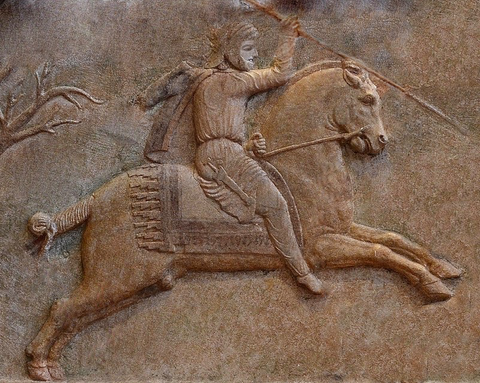
Delivering messages, system of Governors, Satraps, circulating royal decrees, Susa (ancient capital of Persia) - Sardes (Important, wealthy City of The Near East), Darius 1, 522-486 BC, Horses from The Royal Stables, The Kings Pirradazis (horse changing), Angareion (horse posting), Angarium (riders), in relays 24 hours each 1,677 miles, 111 stations (caravanserai) on the heavily guarded Persian Royal Road, for others who travelled on these routes the penalty was death, 7-9 days or, 3 months on foot. First postal system of the world.DARIUS 1 allows The Soapmakers to travel on The Persian Royal Road. The Parthians from Persia (247BC-224AD) allowed silk to travel through their Empire trading ostrich eggs for silk, building caravanserai along The Silk Route ensuring daily riches which, was repeated by The Kushans making The Silk Route safe to travel. Later, Persian Sogdian Traders, 2nd Century BC, travelled on The Silk Route for more than 800 years.
Born : 780 AD, Khwarazm, Persian. Died 850 AD.
800 AD, Caliph Harun al-Rashid founded The House of Wisdom, a library in which writings from other cultures were translated into Arabic. Baghdad became a centre for science, trade. Among its scholars was Muhammad ibn Musa al-Khwarizmi, born Uzebekistan, author of two of history's great mathematical bestsellers. Muslim, Jewish, Christian scholars were allowed to study there.
'On Calculation with Hindu Numerals' a maths book written at the behest of al-Rashid's son and successor al-Ma'mun. Its translation awoke Mediaeval Europe into using arithmetic with just ten number symbols. In latin, his name became 'Algoritmi', his systematic calculating called 'Algorisms' later, 'Algorithms'.
His second masterpiece, al-Kitab al-mukhtasar fi hisab al-jabr wal-muqabala - The Compendious Book, calculation by Completion and Balancing. Al-jabr, latinised to 'Algebra'. 830 AD, solving each type of equation, quadratic formula, a numerical example, proof for each example, which is a geometrical, completing the square, calculation by completion and balancing, he created an abstract mathematical language used across The World, still today. Al-Khwarizmi did not use Symbols, he manipulated algebraic expressions in their own right, rather than thinking of the numbers they represent. Etymologically, the word 'Algorithm' is a combination of the word 'Algorismus' named after Al-Kwarizmi and the Greek word 'Arithmos', meaning number.
However, the concept of 'Algorithms' was first introduced by The Babylonians 2000 BC-1900 BC, Two Tablets found at Senkerah on The Euphrates 1854 dated from 2000 BC.
However, the incredible Al-kwarizmi, Mathematician, Astronomer, Geographer ! The Sin Quadrant, solving trigonometric issues, taking astronomical calculations, observations. He updated, revised, Ptolemy's books on Cartography, Geography and Hipparchus gives us Latitude, Longitude. He worked by subdividing each of the 360 degrees of Latitude, Longitude into smaller segments, each degree was divided into 60 parts, each subdivided again into 60 smaller parts. The first division, partes minutae primae, first minute, second segmentation, partes minutae secundae, second minute became second.

ASHURBANIPAL, the last King of Assyria, 7th century BC (Assyrian Empire 1365-609 BC, 756 years), he reigned 42 years, The North West Palace, Nineveh, Upper Mesopotamia; where he establishes the great library, until the Babylonians sacked the City and Palace in a rebellion 612 BC resulting in The Palace being burnt down. Ashurbanipal’s library was buried beneath the burning walls of his Palace and was lost for over 2,000 years. The first broken and scattered remains of the library were found in 1840 and are now at the British Museum.
1840 Austin Henry Layard later, assisted by Hormuzd Rassam (a Nineveh local) in 1846 funded by The British Museum uncovers thousands of clay tablets written in Cuneiform and Akkadian language at The North West Palace.
1861 George Smith, intrigued by history of Assyria (by profession, an apprentice bank note engraver) spent each lunch hour observing hundreds of clay tablets at The British Museum. The Museum realised his knowledge and invited him to assemble the tablets. To his amazement he married a clay tablet story about a world drowned by flood, about a man who builds a boat, about a dove released in search of dry land. His thoughts were the Noah's Ark story but, this was not the book of Genesis astonishingly, it was Gilgamesh (Sumerian King), an epic poem inscribed into damp clay around 1800 BC. He was invited to read his translation of the tablet to an audience at The Society for Biblical Archaeology in London attended by Prime Minister Gladstone. Epic of Gilgamesh read by George Smith caused a sensation. The Daily Telegraph put up 1000 guineas for George Smith to continue his investigations and excavations; he died in Aleppo of dysentery at the age of 36 years in 1876 leaving 8 groundbreaking books on Assyria.
Hormuzd Rassam was recalled by The British Museum to continue excavations at the Babylonian City of Sippar discovering the great door of the Palace of Balawat and 70,000 cuneiform tablets.1880 was his final expedition as he was being erased from the records due to hyperbole of Sir Henry Rawlinson he was a trustee of the British Museum from 1876 until his death and a British East India Company army officer, claiming Hormuzd Rassam was just a digger who oversaw works in progress. The British Museum removed his name from plaques and visitor guide books. Hormuzd Rassam could not find one publisher for his memoirs having a good relationship with his best friend Austin Henry Layard since he was 19 years old and after spending 18 months at Magdalen College Oxford. He died in Hove 1910, aged 84 years knowing that Layard wrote 'One of the honestest and most straight forward fellows I ever knew and one whose services have never been acknowledged'.By the end of his life, Rassam's reputation and achievements were once again receiving greater recognition, at least amidst his professional colleagues; in their obituary for Rassam, The Royal Geographical Society wrote: 'The death of Mr Hormuzd Rassam deprives The Royal Geographical Society of one of its older and more distinguished Fellows.'Hormuzd Rassam was also a Fellow of The Society of Biblical Archaeology and The Victoria Institute. Today, The British Museum acknowledges that Hormuzd Rassam was an archaeologist later, an official and an assistant to Austen Henry Layard. His excavation papers are held in the central archives in The British Museum.
THE BRITISH MUSEUM : The royal gardens at Nineveh were spectacular. They were irrigated by canals which stretched over 31 miles into the mountains in order to make them a year-round oasis of all types of flora. There is a recent argument that the legendary Hanging Gardens of Babylon (one of the Seven Wonders of the Ancient World) were actually those at Nineveh and later writers had confused Nineveh and Babylon. Even if this was not the case, Ashurbanipal’s gardens were certainly impressive and exotic. The King collected plants from across the Ancient World and brought them back to his capital. The largest Capital City of 18 gates of The Ancient World. However, it was not just the architecture that made the royal residence impressive, surrounding the palace were orchards, game parks, deer, gazelle, lions, lush and exotic gardens, pine trees, date palms, grapevines, pomegranate, pear, fig, olive trees, that evoked a paradise on earth. Ashurbanipal claimed : 'I planted alongside the palace a botanical garden, which has all types of trees and every fruit and vegetable.' The gardens at Nineveh were irrigated by an immense canal network built by Ashurbanipal's grandfather Sennacherib. He brought water to the City over 31 miles using channels and aqueducts to create a year-round oasis of all types of flora.The canals stretching 31 miles into the mountains, and Sennacherib boasted about the engineering technology. A monumental aqueduct crossing the valley at Jerwan, which can be seen still today, made of over 2 million stones and waterproof cement, 918 feet long, 72 feet wide, 29 feet high. The aqueducts were constructed over 500 years before the Romans started building their aqueducts and inscribed with the following words: 'Sennacherib King of the world King of Assyria. Over a great distance I had a watercourse directed to the environs of Nineveh, joining together the water, over steep-sided valleys, I spanned an aqueduct of white limestone blocks, I made those waters flow over it. In order to draw water up all day long, I had rope, bronze wires, chains made and I set up the great cylinders and date palm trees over cisterns. Designing an automatic Sluice that opened by itself. Some of the water was diverted to irrigate orchards, fields to the north of Nineveh, an artificial marshland to delay the flow, filter the water which attracted wildlife.' At Arbela, Sennacherib built an underground tunnel to bring high quality water into the City, an underground aqueduct with shaft to the surface at intervals, ASSYRIANS : Masters of the principles of hydraulic engineering. Water raising screw : a great tree trunk 'gismahhu', the word for cylinder 'alamittu' moulds, date palm tree, water screw cast in bronze.
Ancient Greek & Roman Writers who were associated with the classical account of 'The Hanging Garden of Babylon' : Berossus (Babylonian Priest of Marduk, writer), Josephus, Siculus, Rufus, Strabo, Philo of Byzantium, Cleitarchus (History of Alexander, many historians say, contains many errors, some serious). 8,200 Gallons of Water per day would have been required to service the writers classical accounts. Apparently, there is a recent argument that the legendary Hanging Gardens of Babylon (one of the Seven Wonders of the Ancient World) were actually those at Nineveh and later writers had confused Nineveh and Babylon. Apparently, non of The Writers visited Babylon but, they clearly did know about the eighth gate to the inner City and did not know about the 18 Gates of The North West Palace at Nineveh. It appears the original mistake may have been Cleitarchus who was not above exaggerating, delighting in stories about wonderful things. History shows : even Herodotus of Halicarnassus was capable of making Babylon the capital of Assyria.
The excavations at the site of Babylon have never yielded any evidence of raised architectural gardens. Drawings of a now lost bas-relief ( first discovered by layard 1840) in Nineveh incredibly, Austin Henry Layard's artist had already made a copy of the original and Layard published it in his book on Nineveh in 1853 showing trees growing on a roofed colonnade, similar to those described in The Classical Account of the Hanging Gardens.
Dr. STEPHANIE DALLEY, Assyriologist of Oxford University’s Oriental Institute a scholar of The Ancient Near East. She has retired as a teaching Fellow from the Oriental Institute, Oxford, author of 'The Mystery of the Hanging Garden of Babylon' where The Professor describes : deciphering cuneiform scripts and reinterpreting Greek and Roman texts : a 7th Century BC Assyrian inscription mistranslated : cognisant of the bas-relief in Layard's book : Bronze water raising screw (4 centuries later Archimedes), The Professor has suggested that date palm tree is an early reference to the Archimedes screw, as the trunk of a date palm often grows with spirally protrusions similar in shape to an archimedes screw : Sennacherib referred to his Palace gardens, 700 BC, 'A wonder for all the peoples' : Nineveh renames all of its gates, after the Babylonian gods, after sacking Babylon, The New Babylon : Alexander the Great and his Generals spent days at Jerwan encamped close to the great stone aqueduct, built 703-690 BC, awaiting The Battle of Gaugamela : a complex system of canals, dams and aqueducts, 500 years before The Romans built aqueducts. The Professor looked at the comparative topography of Babylon and Nineveh and realised that the totally flat countryside around Babylon would have made it impossible to deliver sufficient water to maintain raised gardens described in the classical accounts, it therefore became quite clear that the ‘Hanging Gardens’ could not have been built in Babylon. Hanging Garden of Nineveh received mountain water from streams 50 miles away to the Citadel and the Hanging Garden. History re-written, with full detailed definitive evidence.

Layard's artist copy of the original, now lost, bas-relief depicting trees growing on a roofed colonnade, The Hanging Garden of Nineveh.
 Oldest surviving Royal Library, The British Museum, 'Hanging Garden of Nineveh'. Historians : Perhaps 'The Hanging Garden of Nineveh' one of The Seven Wonders Of The Ancient World. Nineveh, Unesco Tentative Listing.
Oldest surviving Royal Library, The British Museum, 'Hanging Garden of Nineveh'. Historians : Perhaps 'The Hanging Garden of Nineveh' one of The Seven Wonders Of The Ancient World. Nineveh, Unesco Tentative Listing.
INCREDIBLE ASSYRIANS building Dams, Canals, Aqueducts and bronze water screws (four centuries before Archimedes, 500 years before The Romans built aqueducts). Cleverness : bronze water raising screw sent water 50 miles from the mountains into the heavenly gardens of Nineveh. Mardin Oil in Soap used by the privileged Royal Gardeners planting The Hanging Garden of Nineveh of Sennacherib, Ashurbanipal (grandfather, grandson), where permission was granted by both Kings for the Soapmakers to travel on The Persian Royal Road at Nineveh, for others who travelled on this route the penalty was death so, the good fortune of travellers on The Silk Route at Nineveh was a better option.Sennacherib : First Hydraulic Engineer of The Ancient World who made Water Climb !

Susa - Sardes : 1,677 miles, 111 stations (caravanserai) on the heavily guarded Persian Royal Road.
One of the best kept secrets for 170 years : 12 sections of treatments (head to toe of the human body), in great detail, 50 clay tablets, 10,000 lines of text, First Standardised, Structured, Systematised handbook on Theraputic Medicine 'Nineveh Medical Encyclopaedia'. A 2600 year old handbook on medicine containing thousands of descriptions of diseases, symtoms, with theraputic perscriptions. The British Museum with the support of Wellcome Trust are reconstructing The Encyclopaedia into English.
King Ashurbanipal's Library, North West Palace, Nineveh, Upper Mesopotamia revelling 'Nineveh Medical Encyclopaedia', still today.

That Special Gift for Him : an original cultural gift. The Ancient Near East, Short Stories, Maps, Sketches, Photographs, Where Time Began, Aleppo : lasting 3-6 months, Matthew was writing His Gospel and always walked for 3 weeks from Antioch to Tarsus perhaps, with a very expensive Aleppo for his best friends Peter, Paul, Apostles, still today. Book, Ancient Soap, Ancient History in Box, Click Store and scroll.
Celebrated Theatres of The Near East Bosra Theatre Southern Syria, Capital of The Roman Province of Arabia, Emperor Trajan 2nd Century AD, seating 15,000, Unesco World Heritage Site in danger !
The Library of Celsus, 12000 Scrolls !

The Library of Celsus, Ephesus, built in 117AD. The repository having a capacity to hold 12,000 scrolls, a marble stairway, columns, four statues representing 'Wisdom', 'Virtue', 'Intelligence', 'Knowledge', building still standing, still today, Unesco World Heritage Site.
Celsus Library is one of the most beautiful structures in Ephesus built in 117 AD Commissioned in 114 AD by Tiberius Julius Acquila with provision to purchase scrolls in the amount of 23,000 Denarius and finished by his heirs. The library was built to commemorate his father Tiberius Julius Celsus Polemaeanus aged 70. Celsus had been a member of the Roman Senate and he was, from 105 to 107 AD, the proconsul of Ephesus. Celsus had also been Consul in Rome in 92 AD, where he was responsible for all public buildings. He was one of the richest businessmen in Ephesus. The library was then a fitting memorial and burial place for one of Ephesus’ grandees. Completed in 117 AD, Celsus was then entombed in a lead coffin encased in a marble sarcophagus decorated with high relief figures of Nike, Eros, rosettes and garlands. The sarcophagus was buried under the flooring near the apsidal wall.
The library of Celsus, Ephesus

Hadrian's Temple, Ephesus
Giza, Sphinx, Egypt
How wonderful to tell your children, grandchildren, where Time came from, where Oil in Soap started. The Egyptians respected The Sumerians where the formula for the area of a Triangle and Cube began, Egyptians, building one of The Seven Wonders of The Ancient World, 481 feet tall, today 450 feet tall, 20 years to build, 20,000 skilled workers, 2.3 million stone blocks, one stone, 2.5 tons, laid every five minutes of every hour, 24 hours a day. The Great Pyramid of Giza, the base of Giza 13 acres, the largest Egyptian Pyramid, Tomb of Fourth Dynasty Pharaoh Kufu, 2551-2528 BC, the oldest and last of 'The Seven Wonders of The Ancient World', still today.
And Professor Alice Roberts even met The Director of all Pyramids of Egypt ! The Professor also confirming the First Right to Strike, Valley of The Kings, Queens, perhaps more than 3150 BC, highly skilled Workers !
The first Pharaoh that unified upper and lower Egypt was Narmer his birth name meaning 'Chisel, Catfish' and Menes was his honorific title meaning 'he who endures' perhaps, 3150 BC. The word Pharoah means 'Great House' meaning the palace where The Pharaoh resides.
Eight Wonders, Women of The Ancient World, see contact page :
Queen Cleopatra :
Cleopatra was Queen, 18 years old, spoke nine languages, studied politics, economics, mathematics. 21 years, she was in The Sinai Desert raising an army, plotting her return to the throne. Her brilliant manoeuvers won strategic alliances with Caesar and Antony, changing the course of history. The Ptolemaic period began in 305 BC, one of Alexander the Great's generals became Ptolemy 1 Soter of Egypt and later of course, Cleopatra (fluent in Egyptian) 30 BC, ends 275 years of Greek rule of Egypt, aged 39 years.
The Fitzwilliam Museum : Egyptology, 16,000 Egyptian artifacts, incredible Seven-ton Sarcophagus, Lid of Ramesses 111.
Ancient Near East: Gallery 23, 33, artifacts, 5,000 years (5,300 BC-300 AD).

Mardin : The Persians, Assyrians and Romans allowed the Soaps to travel, the abundance of Pistachios, kernel of the apricot, favoured by Assyrian Queens and Princesses for their hair, the preference of King Charles 111, 40 centuries of soapmaking, still making history, still today.

-
A Little History
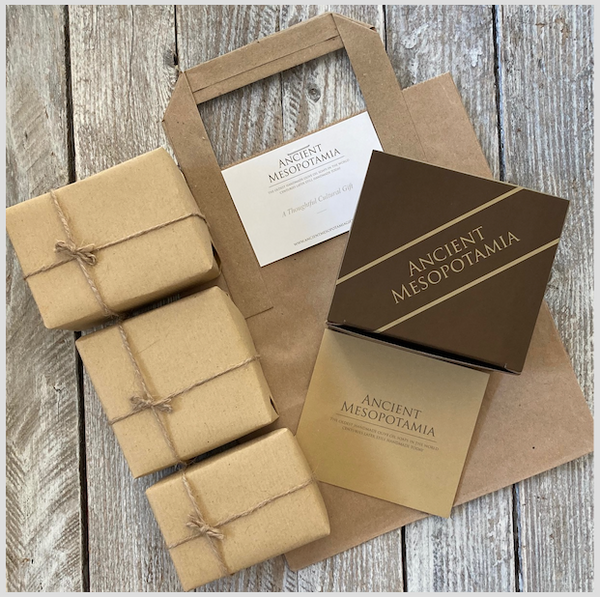
MESOPOTAMIA : Mesopotamia, ancient Greek meaning 'land between two rivers' ( meso middle, potamos river ) the Tigris-Euphrates, both rivers run through the highland plateau of Anatolia, Euphrates 1740 miles, crosses true desert, Tigris 1180 miles, both rivers join and flow as the Shatt Al-Arab into The Persian Gulf. Genesis, the source of the four tributaries : Pishon, Gihon, Tigris, Euphrates, the biblical land known as Ancient Mesopotamia, perhaps The Garden of Eden, The Fertile Crescent, on The Silk Route, the rise of the first sophisticated civilisation of the world, WHERE TIME BEGAN, Sumerians : 60 parts, Babylonians : 60 seconds, 60 minutes, 360 degrees, The Map. Sumerians : Luna calendar 12 months, spear, bow, the wheel, glazed pottery, weaving cloth, the cart, the chariot, the sailboat, the plough, mathematics, architecture, sun-dried bricks, astronomy, astrology, agriculture, irrigation, cuneiform writing, monarchy, stamp seals, cylinder seals, copper tools, arrowheads, razors, swords, harpoons, maces, slings, clubs, oil in soap, beer made from barley sweetened with date syrup, Sumerians : The success, longevity, equals Irrigation. Sumerians : The concept of Time.
SUMERIANS : Ma'dan (Marsh Arabs).
SUMERIANS 5400 BC - 1750 BC, 3650 YEARS, perhaps, although, the first sack of Sumer by Akkadian Empire 2350 - 2150 BC, 200 years, beginning : First Cities Eridu, Uruk, Ubaid period, meaning a common culture, late Uruk Period, Early Dynastic Period, Third Dynasty of Ur, 1940 BC end of Power of Sumerians, Elamite invasion and Amorite migration, fading out 1750 BC. They created distillation by applying resin or, fat with alkali, elementary soapmaking, cleaning wounds and sores, they were excellent at washing wounds and preparation of poultices, they also used essence of cedar accomplished by distillation and the washing of the diseased part with beer and hot water. The birth of the first antiseptics, alcohol, honey and myrrh, the battle of humans and bacteria. Soap : an ancient product has saved more lives than penicillin, SUMERIANS 2200 BC : WHERE OILS IN SOAP BEGAN.

SUMERIANS, four main classes : Priests, Upper Class which, included The Royals, Lower Class and Slaves. Unchanged words of The Sumerians, still today, crocus (flower), Saffron (colour and spice). Sumerians were paid for their work, women had the freedom to work and able to set-up their own business. Being a Brewer created considerable wealth, autonomy, influence. One Brewer Kubaba became ruler of Kish, 2500 BC, the only woman recorded to have such power, the first and only Queen among The Sumerian rulers. However, women mentioned the most in ancient texts were priestesses they frequently ruled city-states as 'Ensí' (designated ruler of a city-state), their power exceeded all but, a few of men (the secular leader was called Lugal meaning 'The Strongman'). However, the first recorded Physicians 2700 BC were Women. The Royal Court had Women Physicians 2500 BC, 'Peseht' know as Lady Overseer of Female Physicians. Also referenced were Female Dentists, Doctors in Ancient Mesopotamian texts. Priestesses served as the first Dentists, Doctors, they had to be celibate.
SUMERIANS : planting date orchards 3,000 BC, planting date palm trees 100 feet tall, 200 years, to give shade whilst quenching their thirst with Barley Beer sweetened with date syrup.
SUMERIANS, before 2,200 BC where oil in soaps began, Sumerians used tallow and ash for personal hygiene valued for one’s standing in the community and honouring their gods. Sumerians personal hygiene was a matter of presentable performance to their gods and duties. 2,200 BC SUMERIAN text : their knowledge was that Soap had medical benefits. 2,200 BC SUMERIAN PRIESTS : used Oil in Soap for medical benefits.
History written on Clay Tablets, The Sumerian King List, lengths of their reigns, where sources had to be found, as Sumer was devoid of Timber, Stone, Minerals. Regular travels, Oman, Indus Valley : Gold, Gemstones, Anatolia, Phoenicia : Cedar Wood.
Logic, Mathematics, Scientific Process : Sumerians, Babylonians were able to follow the movement of the Stars, Planets, Moon, predicting the movements of several Planets. They had a wide knowledge of Mathematics : Addition, Subtraction, Multiplication, Division, Quadratic, Cubic Equations, Fractions, Geometric Shapes, Circumference, Area, Rectangles, Circles, Triangles, Even Pi ! 1800 BC clay tablets showing multiplication, division tables, square, square root tables, tables of compound interest. Babylonian Clay Tablets, astronomers calculations, tracking Jupiter across the Sky, using Geometric calculations. The Egyptians in 1650 BC, Rhind Papyrus, they even worked out Pi, written by a Scribe named Ahmes, 1000 years before Pythagora's Theorem.

Ram Caught in a ThicketA picture of Ancient Sumerian Art and Civilisation : 'The Royal Standard of UR', 'Treasures of The Royal Tombs of UR', 'Ram Caught in a Thicket', a statuette, Lapis Lazuli, Gold and Shell depicting a standing animal nibbling a bush, The intact tomb of a woman called 'Pu-abi', a Queen, wearing a magnificent headdress.
1922-1934 Leonard Woolley, The British Museum, The University Museum Philadelphia, National Museum Baghdad.

Ziggurat, Ur, 2100 BC

Ascending stairway Ziggurat, Ur, 2100 BC
A trench adjacent to the ruined Ziggurat revealed burials, gold jewelry, precious stones, 1800 graves, clay coffins, however, 16 coffins were very different, a Queen confirmed by a cuneiform cylinder seal named Pu-abli, surrounded by serving ladies crowding the floor around, two hundred finely crafted objects of Metal, Stone, Wood. UR, perhaps Abraham's birthplace.

Queen Pu-abi, Headdress 2600-2500 BC, Early Dynastic 111 Period.
The Penn Museum : Ornate headdress and a pair of earrings found with the body of Queen Pu-abi in the Royal Cemetery at Ur. The headdress is made up of 20 gold leaves, two strings of lapis and carnelian, and a large gold comb. She wore chokers, necklaces, and large lunate-shaped earrings. Her upper body was covered by strands of beads made of precious metals and semi-precious stones that stretched from her shoulders to her belt. Ten rings decorated her fingers. A diadem or fillet made up of thousands of small lapis lazuli beads with gold pendants depicting plants and animals on a table near her head.The first Ziggurats pre-date The Egyptian Pyramids, Ziggurats influencing The Pyramids. 2100 BC Ziggurat, at Ur, built by King Ur-Nammu, Third Dynasty of Ur. The four cardinal points, the summer soltice, gods & goddesses, treasuries, workshops, at a height of 98 feet perhaps. Sumerian engineers, First Ventilation : they bored square holes on the outer walls to allow for evaporation. Walls were built at a slight slant allowing rain to escape, The Temple at the top was built of baked mud bricks, pointed with bitumen, naturally occurring tar. Only 30% of excavations have been made at Ur. King Nabonidus 550 BC decided to build seven tiers, at UR, instead of the original three tiers matching Etemenanki. Perhaps, 25 Ziggurats were built on The Plains of Ancient Mesopotamia.
Shulgi of Ur, 2095-2047 BC, ( Ur 111 period) considered the greatest King of Mesopotamia, he reigned 48 years. He reformed scribal schools and increased literacy and being a musician encouraged musical performance in others. He improved roads and built new ones with places where travellers could stop, constructed 155 mile road, a national Calendar, standardised time-keeping, same day and time over his Kingdom. Agriculture, he standardised weights and measures bringing fair trade and taxed The Temples. The King was noted for his running from Nippur to Ur, 100 miles there and back for religious festivals.
Sumerians : The Barton clay cylinder 4,500 years, at the site of Nippur, now housed in The University of Pennsylvania Museum, cuneiform inscribed with confirmation of romantic kissing and more, 1000 years before India inscribes.
The First Author known by name in History : The Great Poet-Priestess Enheduanna meaning Ornament of Heaven who appeared to have worked as a Priestess for 40 years, who signed her name to a set of 3 Poems she wrote about her gods & goddesses and composer of 42 Temple Hymns. She is noted at The Penn Museum : Calcite Disc, 2300 BC with a view of her profile. The woman known for her headdresses where she would dine with men, as her equal. Her Father was Sargon of Akkad, 2350-2150 BC, Mesopotamia.
The Concept of 24 Hours : Sumerians influencing The Egyptians, they tracked a series of 36 constellations, known as Decans, which rise consecutively over The Horizon at approximately 40 minute intervals, each Decan the start of a new hour. A 10 day period began with the appearance of a new Decan in the Eastern Sky before Dawn. 2100 BC, Egyptians created a unified calendar consisting of 36 decades, 360 day year, so they could predict annual flooding of The Nile and by 1550-1070 BC, set of 24 Stars, 12 day time, 12 night time, a 24 hour day. 1500 BC Egyptians invent The Sundial. However, the most accurate timekeeping device was 'The Clepsydra', water clock, 1450-1380 BC found at Karnak Temple 1904 Egypt, an alabaster vessel, which was filled with water that simply leaked at the bottom, shaped, so the water falls at a uniform rate, Cairo Museum. Hipparchus,147-127 BC, a fixed time period by dividing the day into 24 Equinoctial hours, 12 and 12 observed on Equinox days. Hipparchus was influenced by The Babylonians, Sexagesimal base 60, who were influenced by The Sumerians. Natron, a naturally occurring salt found in Wadi el Natrun, dessert, west of the Delta Nile, 75 feet below sea level, 125 feet below The Nile, used as a desiccant in the mummification process found in storage jars, Tutankhamun's enbalming cache.
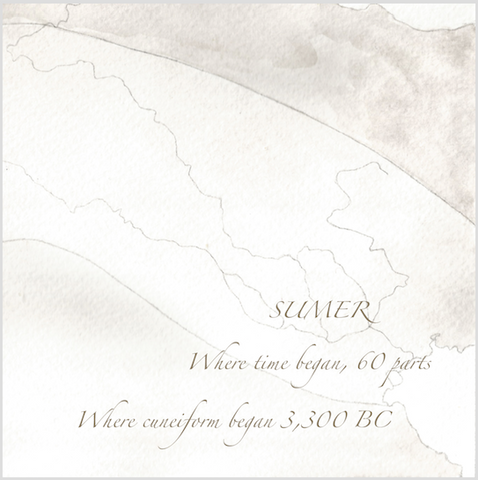
FIRST USE OF SOAP RECORDED ON A CUNEIFORM TABLET GIRSU, a City of Ancient Sumer 2,500 BC, Girsu project : The British Museum, State Board of Antiques & Heritage (SBAH), Paul Getty Trust and Museum. The remains of The Lost Palace & Temple of The Kings of Girsu, statuary of the ruler Gudea and a bridge built of baked brick, the oldest bridge in The Ancient World. Soap, used for removing lanolin from sheep, alkalis from burned wood and fats equals saponification, water absorbs the alkali from the ash 'leaching' creating impure soap. The Sumer City of Ur would call up to 10,000 to labour, dominated by women producing four hundred tons of wool each year. First known recipe of soap one quart of oil, six quarts of potash equals impure soap. The first evidence of soap being used to clean the skin, cuneiform tablet found in Hattusha a Unesco World Heritage Site, the Hittite Capital located in Boğazkale District of Çorum Province. The first recorded evidence of soap production written in cuneiform on a clay tablet 2800 BC, Sumerians. 2200 BC, Sumerians (where oils in soap began), a formula of soap consisting of water, alkali (ash) and cassia oil (cinnamomum) was written on a clay tablet (two thousand years before The Silk Route opened). King Nabonidus, Neo-Babylonian 6th century BC : ashes, cypress extract, sesame oil (antibacterial, antiviral) written on clay cylinders Ur.
The importance of Soap in our world. Tadpole-molecules, mixed with water molecules form spherical structures, 'micelles,' around droplets of dirt, water hating 'hydrophobic' tails pointed inwards, water loving 'hydrophilic' heads pointing outwards. The outside of the 'micelle' is soluble so, washes away, along with dirt trapped in the middle. Soap, has saved more lives then penicillin, enabling our existence, doesn't just make cities healthier, it makes them possible, enabling our existence.
BABYLONIANS : The rise to power of The Babylonians in Mesopotamia around 1894 BC, known as 'Old Babylonian Period’. 1792-1750 BC sixth King Hammurabi of The Amorites, First Dynasty of Babylon, The Stele, 282 Laws, a vertical diorite monument, eight feet tall, inscribed with text, Musée du Louvre, however, 400 years before, Third Dynasty of UR, King Ur-Nammu creates his code of law, dealing with Witchcraft, the Flight of Slaves, Bodily Injuries, Sumerian Cuneiform Tablet. Later, Neo-Babylonian period 626 BC - 539 BC. Babylon, Unesco World Heritage Site.
The sophisticated Babylonians : The Yale Babylonian Collection houses four tablets three, Old Babylonian period, one dated 730 BC with recipes, stews, soups and pies. Elamite broth with dill, Babylonian chicken pie, dough, bird, Babylonian béchamel sauce. Saffron, coriander, parsley, chard and fish sauce from The Tigris, Euphrates. Lamb stew, barley cakes, onion, Persian shallots, milk, leek, garlic. The impressive collection 45,000 inscribed documents, Ancient Mesopotamia housed in 'The Yale Babylonian Collection' overseen by The Peabody Museum of Natural History.
Babylonians, Cleverness : housed at The Columbia University 1800 BC Babylonian clay tablet (Plimpton 322), a Trigonometric Table more than 1000 years before Pythagoras's Theorem and later Astronomer Hipparchus, more accurate, still today. Babylonians used base 60 which, permitted accurate fractions describing the shapes of right angle triangles, based on ratios, not angles and circles. Calculations, Geometry.
Incredible to believe by some Historians : Old Babylonian Empire 1894 - 1595 BC, 299 years. Neo - Babylonian Empire 626 - 539 BC, just 87 years, 386 years.
Incredible to believe by other Historians : Old Babylonian Empire 2004 - 1595 BC, 409 years. Neo - Babylonian Empire 625 - 539 BC, just 86 years, 495 years.


Pergamonmuseum, Berlin, incredible !

BABYLON, Mesopotamia : the eighth gate to the inner City, The Ishtar Gate 575 BC, one of The Seven Wonders of The Ancient World, a Unesco World Heritage Site, where eighty five percent of Babylon remains unexcavated, still today, 2605 acres, 6 and a half miles of outer walls, 262 feet wide moat, 5 miles of inner City walls. ISHTAR GATE : 164 feet from end gate to end gate, each side of the gate consisted of nineteen, 39 feet high wall sections. The gates measured more than 38 feet high with a vast antechamber on the southern side. Etemenanki : Babylon’s largest Ziggurat 298 feet high cited in Ancient Greek accounts as The Temple of Belus and the probable inspiration for The Tower of Babel 298 feet high, described on a Babylonian Clay Tablet, translated by George Smith. The Processional Way : New Year celebrations, over a half a mile long, with walls over 50 feet tall on each side built by order of The King Nebuchadnezzar 11 dedicated to The Babylonian goddess Ishtar. In the works of Greek historians Babylon was distant, exotic and incredible. Greek historian Herodotus, declaring 'Overwhelmingly opulent, the walls so broad chariots could race around them'. Implementers of The Seven Wonders of The World, of the known Ancient World : Herodotus, Philo of Byzantium his work 'On Seven Wonders' 225 BC, Callimachus of Cyrene Architect, Writer, Chief of The Library of Alexandria, Diodorus Siculus Ancient Greek Historian, Antipater of Sidon, Greek Writer, Poet 2nd century BC begins the official listing replacing The Ishtar Gate for The Lighthouse of Alexandria, First Lighthouse of The Ancient World 'Pharos of Alexandria', the blazing inferno 393 feet, each night, for a 1000 years.

First Lighthouse of The Ancient World 'Pharos of Alexandria', commissioned by Ptolemy 11 Philadelphus, built 279 BC, by Sostratus of Cnidus, the source of light was an enormouse open fire at its summit 393 feet high, mirrors to reflect sunlight for miles out to sea, the remains of Statues, Stone Sphinxes, sections of The Lighthouse, 3100 objects over years of searching, lay still in the waters, it stood for more than a thousand years, replacing The Ishtar Gate (walls of Babylon), as one of The Seven Wonders of The Ancient World. The perfect seven wonders of The Ancient World lasted 60 years together, before destruction one, by one ! with only one standing Giza, Egypt, still today.
Babylon : Etemenanki (House of the Foundation of Heaven on Earth), Ziggurat, also known as, The Temple of Belus, The Tower of Babel, described on a Babylonian Clay Tablet, translated by George Smith.The Tower of Babel had seven stages, the lowest tower was 298 feet square and the whole was 298 feet high, originally built by King Hammurabi, 17 million fired bricks. Under King Nebuchadnezzer 11 the restoration and enlargement of Etemenanki took 43 years to complete. Alexander the Great cleared rubble from the destruction of Etemenanki using 10 thousand labourers before his fever and death at Nebuchadnezzar's Summer Palace. Ziggurat, influencing the development of The Pyramids.
The first handmade olive oil, pistachio oil, laurel berry oil and almond oil soaps traded on The Silk Route at a time when Jesus was born, Roman Emperors, Kings, Queens, Princesses, Pharaohs of Egypt reigned : Sumerians, Akkadians, Sumerians, Babylonians, Assyrians, Babylonians, Assyrians, Persians, Alexander the Great's greatest expansionism of the know Ancient World.
The Seleucid Empire 323-64 BC, after the death of Alexander the Great, his conquered territories were divided between his generals, know as 'Diadochi', Alexander's friend Seleucus Nicator 312-281 BC became King of the Eastern Provinces.
The Ptolemaic period began in 305 BC, one of Alexander the Great's generals became Ptolemy 1 Soter of Egypt and later of course, Cleopatra (fluent in Egyptian) 30 BC, ends 275 years of Greek rule of Egypt. And of course, history could have been re-written if Alexander the Great of Macedon, had survived his 33 years after conquering Macedon-India. He died 323 BC while suffering a high fever that lasted 10 days, Summer Palace, Babylon. Ptolemy I Soter, needed to link himself to Alexander so, he simply hijacked the funeral train and hearse containing Alexander's Mummy travelling from Babylon to Macedonia, travelling first to Memphis, then onto the new capital of Egypt, Alexandria. In the middle of Alexandria was Soma, the Necropolis of The Ptolemies where Alexander was rested. Roman Emperor, Caesar Augustus, Octavian, paid his respects after the conquest of Egypt at Alexandria, 30 BC. Ptolemies : 275 years.
Perhaps Professor Alice Roberts colleague Kathleen Martinez, archaeologist, criminal Lawyer, who has been searching for 20 years, Ancient Taposiris Magna Temple, 2000 acre site, west of Alexandria, her current findings : Tunnel 4281 feet long, stretching 6.5 feet tall, 43 feet underground, beneath The Mediterranean Sea, extracting massive volume of sand from the Tunnel, three sanctuaries, a sacred lake, 1500 objects, busts, statues, golden pieces, coins portraying Alexander the Great, Cleopatra, Ptolemies, looking for Queen Cleopatra's burial site, perhaps even Mark Antony, perhaps the enactment of Isis and Osiris, immortality ! Update : The discovery of an intact tomb at Taposiris Magna giving confidence of finding Cleopatra, two mummies of high status that would have been decorated in gold leaf proving that they were top society people. Robert Ballard, discoverer of Titanic, Ocean Exploration Trust has been asked by Kathleen Martinez to assist. Blockage in The Tunnel has resulted with a Mapping of Alexandria Seashore resulting in finding a Submerged Port, now, Divers and The Egyptian Navy are investigating. Further Update : While awaiting her next Permit Season, structures have been found nearly 10 feet tall in The Mediterranean Sea, Basalt (fine grained rock) has been found, which, was found previously, Temple 1, in Statues, Five further points will need investigation reaching out as far as 6.2 miles into The Mediterranean Sea. The tunnel is a facsimile of Eupalinos Tunnel, Samos, Greece that was built as an aqueduct for 1000 years. Incredible : The remains of a Lighthouse in Taposiris Magna, a smaller facsimle of Pharos of Alexandria.
Alexander the Great : founded many cities bearing his name, including Alexandria, Egypt where he instructed his architect Dinocrates of Rhodes to draw up a plan of Alexandria based on an irregular quadrilateral plan. He ruled for 12 years, 8 months. He died 13th June 323 BC, after conquering a vast Empire : Greece, Egypt, India and everything in between, one language, one culture, one coinage !
Aigai, Northern Greece, The Royal dynasty of The Temenids, the family of Philip 11, son Alexander the Great, where the unlooted tomb of Philip 11 rests, Unesco World Heritage Site.
343 BC Philip 11 of Macedonia invites philosopher Aristotle to teach his 13 year old son Alexander. Aristotle taught Philosophy, Medicine, Scientific Investigations, Logic, Astronomy, Meteorology, Zoology, Metaphysics, Theology, Psychology, Politics, Economies, Ethics, Rhetoric, Poetics, the systematic disciplines. Incredible Aristotle : knowing that the existence of many of these subjects did not exist before him. Socrates taught Plato, Plato taught Aristotle, Aristotle, taught Alexander and gave him the works of Homer which, Alexander carried on all his campaigns, Homer's lliad was his favourite poem.
The Petrie Museum of Egyptian Archaeology, Philology, University College London (UCL), created 1892, at the bequest of writer Amelia Edwards, 1831-1892. First, 'Edwards' Professor, William Finders Petrie 1853-1942 : earliest pieces of Egyptian Linen, 5000 BC, Metal, Iron beads, cylinder seal 3500 BC, oldest Wills on papyrus, oldest Gynaecological papyrus, oldest Veterinary papyrus, Ancient Egypt, Architectural Shrine drawing 1300 BC, Costume, oldest Dress, long sleeve Robes 2400 BC, Suit of Armour, Palace of Memphis, Roman Socks and Sandals, Art, Akhenaten's City at Amarna, Tiles, Carvings, Frescoes, largest collection, Roman Mummy portraits, 1-2 centuries AD, Documented Excavations, The Large Typological series of Objects, The People of The Nile Valley.

GALEN OF PERGAMUM : 129-210 AD, Philosopher, Greek Physician, Surgeon, Personal Physician of The Emperors summoned by Marcus Aurelius 169 AD at the age of 40 years back to Rome, later serving Commodus and Septimius Severus, Chief Physician for the treating of wounds to the gladiator school in Pergamum. Discoverer, that urine was formed in the kidney (as opposed to the bladder which, was common belief) and arteries carried blood, not air ( as had been taught for 400 years). His theories dominated medicine for 1500 years.He was a prolific writer 300 titles of works, 150 survive today. His 12 years of learning the doctrines of ancient medicine : Corinth (medical school), Pergamum (medical school), journeying through Cilicia, Antioch, Aleppo, Smyrna (medical school) to the greatest medical school of the Ancient World, Alexandria (5 years of studying) declaring to his patients the importance of hygiene and the healing powers of the oils in soap (antiseptic, anti-itching, antibacterial). Galen was cognisant Soap had medical benefits because of ancient civilisation knowledge. 2,200 BC SUMERIAN PRIESTS : Sumerian Priests used oil in soap for medical benefits, written on clay tablets : the greatest medical discovery in human history. Galen collected plants with healing properties for debates of their uses. Galen’s final works were written after 207 AD, which suggests that his Arab biographers were correct in their claim that he died at age 87, in 216-217 AD, either in Pergamum or, Sicily.
ZOSIMOS OF PANOPOLIS 3rd century AD, unanimously recognised as the greatest of the Graeco-Egyptian alchemists, investigates the composition and chemical changes that occurred in the water and oils, describing soap and soapmaking, Centuries later, still handmade today, remarkably, from the same historical areas, as the Soapmakers continue making history; hand-cut, dried stored for months being traditionally produced by hand through the generations of families, with only natural ingredients, unchanged throughout the centuries.

THE SILK ROUTE : The Merchants of Antioch earned their reputation for hundreds of years from the sale of silk, soap, glass, spices, cotton, dyeing, tanning, furs, wine, vineyards produced the City's wine but, produced much to export with The Orontes River (coming from the east), busy with olive oil, wine and rich fishing (eels for the poor), bread (wheat for the wealthy, barley for the poor), pepper, copper tools, metal, clay and the appalling trade of Slaves. Caravans of camels loaded with jewels and spices from Cappadocia, Persia, India, Arabia travelled through the City where exchanges on a large scale were conducted. Trading under 1400 Roman columns, 18 feet tall and porticoes for two and a half miles, using their vegetable oil filled lamps each night to light up The Colonnaded Street for more than 800 years. Hedonistic Antioch, 'Queen of the East' of the known Ancient World, the City of up to 500,000 people (115 AD), patrolled by Roman Legionaires, where residents used their oil filled lamps outside their homes (where rich houses were almost always three stories) increasing the illumination of the City at night, Hellenistic art, a Fusion of Greek and Near East Artistry. Persian Sogdian Traders travelled and spoke the language of Sogdiana for hundreds of years from Chang'an (perpetual peace), Han Dynasty, Samarkand to Antioch the third largest City of The Roman Empire. Antioch's large Jewish population occupied their quarter called The Kerateion at the southern end of Antioch between the Cherubim Gate, 1st century AD, later, the Daphne Gate by the river Phyrminus, where Hadrian was in command of the army of the East. Commissioned by the 9th Emperor Vespasian establishing The Praetorian Fleets : Classis (Fleet) Syriaca. Classis (Fleet) Mesopotamica. Patrolling Antioch (Selucia, seaport) to Alexandria, reinforced, if necessary, with 200 ships from Classes Praetoriae. Emperor Hadrian (Imperator) nominated by his legions of the East, Antioch, 11th August 117 AD, 41 years old, 11 months later he journeyed to Rome arriving 9th July 118 AD. The Roman Empire reaching its most expansionism upon the death of Emperor Trajan, where Emperor Hadrian stabilises The Empire for the next 21 years, the third of the five Good Emperors.

THE VESPASIANUS - TITUS TUNNEL (The Dam), 1st century AD, ANTONINUS PIUS completes, 2nd century AD (Unesco Tentative Listing) . 10th Legion Engineers, built by Roman Legionaries, Sailors and skilled Jewish Prisoners, more than three quarters of a mile digging into The Nur Mountains. The longest handmade dug tunnel in history, preserved authenticity, without damage still today, ensuring Antioch's seaport Seleucia from silting-up, flooding and water supply during summer.

The Vespasianus - Titus Tunnel

2640 BC procuring silkSILK : 2640 BC Empress, Xi Lingshi, Wife of The Emperor Huang-di (ancient writings of The Chinese Historical Classic, The Tribute of Yu, mulberry growing, silk farming, quoted by Confucius), (Confucius, 551 BC-479 BC), Xi Lingshi, 14 years old, the implementer of silk; by chance, a silkworm cocoon fell from a mulberry tree into her tea cup unwrapping the silk and strong but, soft thread. The Yellow Emperor wore white Silk at the Imperial Palace during the day and Yellow Silk at night, a class distinction. Silk : perhaps 5000 silkworms to make a silk dress, perhaps, 5000 silkworms make a pure Kimono, bioderadable, no other fabric comes close to its softness. Ancient Greek word for Silk People 'Seres' China, The Land of Silk. Unesco World Heritage Site status listed thirty three named places, where The Silk Route Began, Chang'an-The Tian-Shan Corridor.
Permission was granted to trade outside of China for the first time and later, silk for gold with The Roman Empire. Chang'an, (perpetual peace),Capital of China-Antioch, 3rd largest City of The Roman Empire on the Mediterranean waters, 4,025 miles. Han Dynasty's Emperor Wu Di 138 BC sends explorer Zhang Qian, as diplomat, envoy, to the West opening The Silk Route. By 102 BC China controlled traffic and taxes at Tun-Huang Oasis later, called Dunhuang Oasis. Traders from the West were compelled to wait until Chinese soldiers checked for silkworms or, cocoons. The Roman Empire's Pliny the Elder 'At least a hundred million sesterces flow out of the empire every year to India, China and Arabia, that is how much luxury and women cost us'. Yellow silk : a class distinction. 550 AD : Emperor Justinian Ist sends two emissaries (Nestorian monks) to China to smuggle silkworm eggs, hidden in a bamboo cane packed with straw keeping them dormant, tired of paying exorbitant silk prices. The beginning of Sericulture (silk farming).
'Han' the name of The Chinese People. Han Chinese dominant ethnic group, China, still today. By the 1st century BC silk reached Rome, initiating the first 'Silk Route’. Pliny, writing about silk, thought it was made from the down of trees. The Silk Route, Chang'an 2nd Century BC, capital of China, Han Dynasty observing thirty three listed names : capital cities, palaces, Khan Kingdoms, trading settlements, Buddist cave Temples, ancient paths, beacon towers, parts of The Great Wall, fortifications, religious buildings, Where The Silk Route Began, Chang'an - Tian-Shan Corridor a Unesco World Heritage Site. The Parthians from Persia (274BC-224AD) allowed silk to travel through their Empire trading ostrich eggs for silk.The Roman Emperor Augustus (ruled 27 BC-14 AD) was the first from Europe to arrive in China confirmed by Roman Historian, Poet Florus. 166 AD, rumour reported at the time an emissary from Andun (China) on behalf of Emperor Marcus Aurelius brought gifts of ivory, tortoiseshell, rhinoceros horn to the Chinese. Romans are believed by some to have made it as far east as the Gobi Desert. The people in Liqian, a village in Gansu Province in western China on the fringes of the Gobi Desert, near the Qilian mountains, say they are descendants of Romans and say the curly hair, straight noses, and light-coloured eyes that some of them have proved it.The Romans that made it to China are said to have been soldiers under Crassus a Roman leader who formed the First Triumvirate with Julius Caesar and Pompey who survived a battle against the Parthians in Syria and Persia and then made their way east, working as mercenaries for the Huns, until they were captured by Chinese troops during a Chinese attack on the Hun ruler Zhizhi, Uzbekistan. Han Dynasty, five immense innovations : Porcelain, (Eastern Han Dynasty), Gunpowder, Paper, Printing, Compass. Paper arriving first in Samarkand as late as 700 AD destined for Europe.
The Nomadic, Mongol, Turkie Tribes, Xiongnu (known as Huns), The Han Dynasty protecting themselves from the raiders. The Dynasty only had a small pony breed and rumour of the 'Heavenly Horses' at The Ferghana Valley, north west China, Tian Shan Mountains was irresistible. An order was given by Emperor Wu Di for Zhang Qian,100 men to travel towards the notorious Taklamakan Desert (meaning you will not come out alive), Zhang Qian was taken prisoner for over 10 years returning 3 years later to Chang'an with only one man by his side. Emperor Wu Di was aghast that the Ferghana Horses were strong and large, also learning of Persia and South East India. 60,000 men were despatched lead by Zhang Qian, Ferghana Horses finally arrived in China.
The Silk Route : stability : stabilised by The Roman Empire, The Han Dynasty, The Parthians and Kushans, a Tribe from North Western China.
Chang'an : Silk Route arrivals each day : furs, precious stones, ivory, grapes (Greek speaking region, near Bactria), famous for its vineyards, precious Jade from the mountains of The Tarim Basin, with The Chinese now calling The Empire 'Da Qin', The Roman Empire.
SILK : The silkworms : the caterpillar, of a large flightless moth, Bombyx Mandarina (wild silk moth), when changing from caterpillar to moth the silk worm spins a cocoon around itself for protection. The inner part of the cocoon is a continuous strand of a fine silk that can measure up to 2952 feet, this strand then entwined with 14 others produces the silken thread which, can then be woven into SILK CLOTH.Antioch : Silk, the height of fashion amongst The Aristocracy. Rome : Insatiable for Silk, arriving 1st Century BC.However, Silk has been traced back to Neolithic, China, fragments found 3630 BC. Articles of Silk have been excavated from Hubei Tomb, Marquis Yi of Zeng, 433 BC, 234 fragments found. Discovery of a Child's Silk Shroud, carbon dated 5000 years ago, sericulture at a local level !

Phoenicia : The Alphabet was invented in the early second millennium BC which, spread across the Mediterranean world in the first millennium BC. Phoenicians, also famous for skilled shipbuilding.
Babylonia : 6th Century BC, the first circular MAP Babylonian called 'Bitter River' written on a clay tablet, The British Museum.
Egypt : Egyptians, 3000 BC, Rushlights, Torches, soaking, dried Plinth, Rush Plant, melted fat.
THE MUSEUM HOTEL (Antioch), Hatay Province. Building safe from earthquake, 6th February, 2023 7.8 Mw.
Centuries Later, Still Preserved Today, 10 year project, over 27 feet below ground level, 4 acres of Antioch ( City of Antioch 1,100 acres, where The Soapmakers made history), excavating, authenticity preserved, still today.
30,000 objects dating back to the 3rd Century BC : The Necmi Asfuroğlu Archaeology Museum, Hatay Archaeology Museum overlooking Mt. Silpius. Peter digs the foundation of the first church, St Pierre, Mt. Staurin, Antioch (Unesco Tentative Listing). His missionaries were his imperative, suffering martyrdom under Emperor Nero, Rome : The Marble Roman Forum, public meeting place 9000 sq ft, The Pegasus mosaic, 160 shades of plant dyed stone, Frescoes of Apollo and Nine Muses 2nd century AD, Eros : marble statue 200 AD, World's largest single floor Mosaic 11,302 sq ft, observing its undulating flow, subsidence, earthquakes 4th Century AD, Wildlife Mosaic 5th Century AD, Roman Baths 5th Century AD and stone surfaced Roman Road 64 BC Antioch, preserved authenticity, still today.Mosaics, columns and walls of ancient Antioch, the third largest City of The Roman Empire after Rome and Alexandria, favoured by The Emperors, third century AD, The Imperial Palace residence of Queen Zenobia (Antiochia, the preference of Queen Zenobia, just a short walk from the Soapmakers), Queen of Palmyra Empire, Queen of Syria, Queen of Egypt, ruler of one third of The Roman Empire (6 years, loved by her people), declaring ancestry with Cleopatra, educated in Greek, Latin, Egyptian (fluent) and Aramaic, defeated by Emperor Aurelius, chained in gold chains, treated with humility but, paraded in Rome for a life in Tivoli, where she re-married and died 34 years old, 4 children.

Chariot history of The Roman Republic : races featured four colour-themed teams, Reds, Whites, Greens, Blues, each attracting fanatical support. 6th century Antioch, Greens had incorporated the Reds and Whites absorbed into Blues. Obsession with racing turned Antiochenes either Green or Blue, the obligatory riots ensued, as they struggled for supremacy. Historian Malalas, mentions disturbances in the reign of Anastasius. An uprising by Greens faction was put down 494 AD. Even Procopius, was compelled to flee, as the Green faction prevailed.

ANTIOCH, the centre of literature, the royal library (built by the Seleucid Empire 323 BC and later, 223 BC under the direction of grammarian, poet Euphorion of Chalcis), theatre, temples, public squares, baths, palatial homes, churches, aqueducts (Hadrian's finest work). Herod the Great became King in 37 BC ruling Judaea for 33 years, as a client of Rome. His generosity towards Antioch (he's appalling guilt, jealousy, entirely possible that King Herod was capable of the atrocity of children, as confirmed by Matthew thereafter, he had his wife Mariamme and three sons killed), where the muddy streets were replaced with polished marble and adorned with a Colonnaded Street for two and a half miles, together with a Stoa erected along the east side of Antioch. Later, Emperor Tiberius builds Two long Colonnades, southwards towards Mt. Silpius. Theatre, Augustus Caesar, enlarged by Agrippa, Tiberius, Trajan, 1st Century BC - 2nd Century AD. Amphitheatre, from the Greek word amphitheatron, spectators all around, on both sides, Julius Caesar 47 BC. Hippodrome, Circus, adjacent to The Imperial Palace, 1638 feet long, 255 feet wide, chariot racing, 80,000 spectators, obelisk from Egypt, spina divides the course, 928 feet long, limestone blocks, donated by Quintius Marcius Rex proconsul of Cilicia 67 BC.1400 Roman columns and porticoes for two and a half miles, The Colonnaded Street, the surface of Egyptian granite, ordered by Emperor Antoninus Pius 138-161 AD paving the great east to west artery wide enough to accommodate caravans, as the merchants passed through buying and selling, until 3 a.m. the abundance of mules, asses, camels, horses. Libanius, Antioch's celebrated Orator 314-393 AD 'Indeed, if a man had the idea of travelling all over the earth, not to see how cities looked, but to learn their ways, our City would fulfil his purpose and save him his journeying. If he sits in our market place he will sample every city, there will be so many from each place with whom he can talk. The City loves the virtues of those who come to it exactly as it does the virtues of its children, imitating the Athenians in this also'. The one thousand, one hundred acre Roman City illuminated at night for more than 800 years. The romantic magnet for scholars, writers, philosophers. Antioch, 64 BC a Roman Province. Antioch, where The Silk Route 2nd Century BC, on The Mediterranean waters ended.
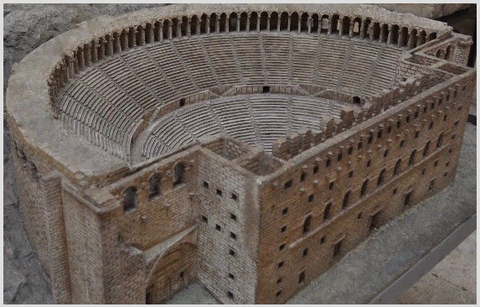
Impression of Antioch Theatre, Augustus Caesar, enlarged by Agrippa, Tiberius, Trajan, 1st Century BC - 2nd Century AD.40 CENTURIES OF SOAPMAKING, used by The Emperors, Kings, Queens, Princesses, Pharaohs and the wealthy for two thousand years before The Silk Route opened, centuries later, still handmade today. Awakening the activity, The Near East, more untold than we thought.
ANCIENT MESOPOTAMIA : continuing the ethical and sustainable ethos, the culture and spirit of the first Soapmakers of the world remarkably, 40 centuries later, still handmade today from the original historical areas whilst supporting their families.

The Silk Route 2nd Century BC Chang'an - Antioch on the Mediterranean waters, 4025 miles.
Nablus, first pressed olive oil, olive groves of 5000 years, still today.

NablusNABLUS PALESTINE,THE FERTILE CRESCENT, (the preference of Elizabeth 1), Nablus Soap, remarkably, from the same historical area since the 10th century AD. The world's most ancient olive groves (five thousand years, still today), a Unesco World Heritage Site, Central Highland area of Nablus, Battir to Hebron, seven natural springs, 63 BC, The Roman Empire (10th legion) channels and pools irrigate, centuries later, still worked today, continuing making history.
Jacob's Well, located at the entrance of Nablus. Jacob, on his return from Mesopotamia, bought a plot of land from Hanor on which he pitched his tent and dug a deep well for himself, his children and his flocks. Followers of Jesus say that it was at this well that Jesus met the woman from Samaria and asked her for water to drink, the well has been a pilgrimage still today, Nablus, Palestine, The Holy Land.
9,000 years, it was mentioned in the Bible as Shechem with the names of Abraham, Joseph and Jacob. Neapolis, the New City named in 72 AD by The Flavian Emperors 69 AD-96 AD, the modern name of Nablus is a corruption of the Greek name Neapolis. 2nd Century, Emperor Hadrian builds an impressive Theatre in Neapolis seating 7,000. Always the home of The Samaritan's, still today, meaning a person who is generous in helping those in distress, Old Town of Nablus, Unesco Tentative Listing.

The Great Theatre of Ephesus, leading down to the waters edge, seating up to 25,000, enlarged by The Roman Empire 1st Century AD, where Paul preached. Lysimachus, is credited with the building of the theatre in Hellenistic times, 60 years of digging into the mountainside, Unesco World Heritage Site.
The Silk Route 138 BC Chang'an - Antioch on the Mediterranean waters, 4025 miles, Han Dynasty's Emperor Wu Di sends explorer Zhang Qian, as diplomat, envoy, to the West opening The Silk Route. Antioch : Seleucid Empire 323 - 64 BC The Roman Empire.
The eight Women of The Ancient World, Kubaba, the only Queen of The Sumerians, Queen Pu-abi, 111 period, Enheduanna, Poet, Priestess, Queen Cleopatra, Queen Zenobia, Empress Theodora, Empress Xi Lingshi, Pharaoh Hatshepsut, a thousand years after The Pyramids, Queen Hatshepsut (Hat-shep-soot) became Pharaoh, considered the most successful of all Pharaohs reigned 22 years, died 1457 BC and the ninth, Priestesses, ruling City States, 'Ensi', Troy, Pergamum, Ephesus, Mt. Koressos, The House of Mary, Unesco World Heritage Sites, Lydia, Caravans of Camels loaded with Jewels, Spices, from Cappadocia, Persia, India, Arabia, Persian Sogdian Traders travelled and spoke the language of Sogdiana for hundreds of years from Chang'an (perpetual peace), Antioch, 138 BC, Sumerians, first Astronomers to Map the Stars into different constellations.
Historians : Dismissed Oil in Soap, as a luxury too far and most could never have afforded it so, Oil and Strigil was the explanation; if they only knew it was the greatest medical discovery in human history, still today.
THE STORY OF THE NEAR EAST, NOT TAUGHT IN SCHOOLS, CHILDREN NEED TO KNOW WHERE TIME CAME FROM, 60 SECONDS, 60 MINUTES, 24 HOURS, MATHEMATICS, IRRIGATION, 360 DEGREES, AL-JABR, LATINISED, ALGEBRA, GEOMETRY, TRIGONOMETRIC TABLE, 40 OTHER THINGS WE TAKE FOR GRANTED EACH DAY ! Telling the story to a new generation !
Coming soon ! Children's Book, end of spring 2024 !
The Children in the Clouds !
5400 BC, High on the Plateau of Anatolia, where the clouds are at one with the Plateau, four children are in deep shock. A journey with their parents up from The Persian Gulf, up The Euphrates, 1740 miles, crosses true desert, a disaster beyond their imagination, with their parents drowning, floating away, the torrent flow of The Euphrates, where dreams are lost, but, at that moment power was gained, a gift of Clairvoyance ( beyond the senses ) was overcome by The Children using their knowledge to tell the story of The Ancient Near East. WHERE SHALL WE BEGIN : I’m Erin (abundant land) I'm 15, this is Lilla (oath of god) she is 14, Zara (radiance) is 10, Inda (bump) 9 ! Umbra, latin, meaning shadow, The Egyptians invent The Umbrella to keep them out of the hot sun. Hieroglyphic drawings show parasols over their heads 3500 BC.
Umbra, latin, meaning shadow, The Egyptians invent The Umbrella to keep them out of the hot sun. Hieroglyphic drawings show parasols over their heads 3500 BC.Assyrian Kings were the only users of Parasols, not their people.
Assyrian relief : First known depiction of handshaking 9th century BC. Assyrian King Shalmaneser 111, shaking hands with a Babylonian ruler sealing an alliance.
It was the mid 19th century that The Near East was about to be explored for Biblical reasons and then they discovered Sumer, then the narrative of The Near East and then Göbekli Tepe.
The Near East, Hellenistic Art, A Fusion of Greek, Near East Artistry, The Near East, more untold than we thought.
The Ancient World’s impressive culture and inventions : Sumerians, Babylonians, WHERE TIME BEGAN, where children of the world need to know. Sumerians : The concept of Time.
SUMERIANS : Implementing Clay, building cities, writing in Cuneiform on Clay Tablets influencing The Egyptians Heiroglyphics.
SUMERIANS : First, to measure Measurements in The Ancient World.
Every area of human knowledge was advanced within The Fertile Crescent : Science, Writing, Literature, Religion, Agriculture, Mathematics, Astronomy, Astrology, long distance Trade, Medical practices, domestication of Animals, Concept of Time. Without doubt, Irrigation was the panacea.

____
-
Contact
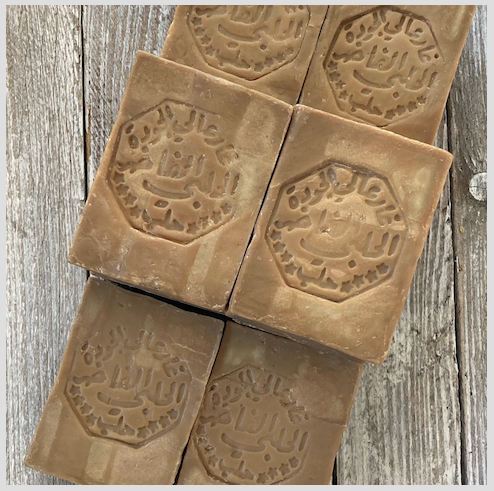

BOOK : THE ANCIENT NEAR EAST, short stories, maps, sketches, photographs, in colour, Where Time Began, still today, click store and scroll.
THE STORY OF THE NEAR EAST, NOT TAUGHT IN SCHOOLS, CHILDREN NEED TO KNOW WHERE TIME CAME FROM, 60 SECONDS, 60 MINUTES, 24 HOURS, MATHEMATICS, IRRIGATION, 360 DEGREES, AL-JABR, LATINISED, ALGEBRA, GEOMETRY, TRIGONOMETRIC TABLE, 40 OTHER THINGS WE TAKE FOR GRANTED EACH DAY ! Telling the story to a new generation ! A purchase for every Parents household, educating Children, Parents, Grandparents !
Coming soon ! Children's Book, end of spring 2024 !


THE CHILDREN IN THE CLOUDS !
5400 BC, High on the Plateau of Anatolia, where the clouds are at one with the Plateau, four children are in deep shock. A journey with their parents up from The Persian Gulf, up The Euphrates, 1740 miles, crosses true desert, a disaster beyond their imagination, with their parents drowning, floating away, the torrent flow of The Euphrates, where dreams are lost, but, at that moment power was gained, a gift of Clairvoyance ( beyond the senses ) was overcome by The Children using their knowledge to tell the story of The Ancient Near East. WHERE SHALL WE BEGIN : 'I’m Erin (abundant land) I'm 15, this is Lilla (oath of god) she is 14, Zara (radiance) she is 10, Inda (bump) is 9' !Erin : 'Zara, Inda are warming up' : 'We both want to say that although she had much baggage, the finest Pharaoh was Queen Hatshepsut (Hat-Shep-Soot), who ruled Egypt for 22 years, she died 1457 BC. She was a wonderful Pharaoh, assertive, rising above all issues, dealing with neighbours and her elite staff, giving peace to the people. Pharaoh, means 'Great House' The Palace where the Pharaoh resides'.'And whats this clever Algebraic Mathematician Al-Khwarizmi, born Uzebekistan. He wrote two books 'On Calculation with Hindu Numerals', 'The Compendious Book', if you translate his name into latin 'Algorithm', clever clog' ! ' Coming soon, end of spring '24 !
Lilla, Inda : 'The Ancient Near East, The Fertile Crescent, the best 9 Leaders, we have had to include the very determined number 10 ! We all think the Best, Kindest, Clever, Ruthless : 1.Sumerians, best, clever ! 2. Babylonians, best, clever ! 3. Pharaoh Hatshepsut (Hat-shep-soot) reigned 22 years, decent throughout her reign. 4. Seleucus Nicator 312-281 BC, Alexander’s friend, Seleucus Nicator became King of the eastern provinces, reigned 24 years.The Seleucid Empire 323-64 BC, always fair. 5. Queen Zenobia just loved by the people of Syria, Palmyra, Egypt reigned 6 years. 6. Alexandra the Great, reigned 12 years, 8 months, ruthless but, after conquering, always fair.7. Darius 1, shahanshah, King of Kings reigned 36 years, 522-486 BC, Incredible Administrator. 8. Cyrus the Great, reigned 29 years, a deeply generous Leader to all peoples. 9. Emperor Trajan reigned 19 years, ruthless, but, achieved The Expansion of The Roman Empire.10. Lysimachus who spent 60 years digging into the mountains, Ephesus Theatre, gosh, World Heritage Site', Inda : 'I've just remembered my backache' ! Erin : 'So, we are off on our travels, my donkey ‘Jack’, Lilla's ‘Jenny’, Zara's ‘Molly’ and Inda’s ‘Jackass,’ Inda : 'gosh, he’s funny Erin, good choice' ! 'Erin : So, we are off to Ancient Mesopotamia yes, but, we must follow the map its says Troy, Pergamum, Ephesus, Mt. Koressos, The House of Mary, Lydia, all World Heritage Sites, wow' !
Erin : 'So, we are off on our travels, my donkey ‘Jack’, Lilla's ‘Jenny’, Zara's ‘Molly’ and Inda’s ‘Jackass,’ Inda : 'gosh, he’s funny Erin, good choice' ! 'Erin : So, we are off to Ancient Mesopotamia yes, but, we must follow the map its says Troy, Pergamum, Ephesus, Mt. Koressos, The House of Mary, Lydia, all World Heritage Sites, wow' !
Erin : 'There it is, Troy, Ancient City, 4000 years, The Trojan war and over there the impression of the enormous Trojan Horse ! Wow ! 1868 Achaeologist Schliemannfinds evidence of Troy, Trojan War, The Mythical King Priam.3000 years, Ancient Greek Poet Homer told the story of the ill-fated city of Troy, the great Trojan War in his powerful epic, The IIiad, the mythical tale of love, war, capturing imaginations'.Erin : ‘Hello, are you here to see the incredible Troy’ ?Dafni : ‘Yes, my name is Dafni, it means Laurel in Greek’.Erin : ‘May I introduce my sisters Lilla, Zara, Inda'. ‘Hello’, ‘Hello’, ‘Hello’ !Lilla : ‘How wonderful that you want to learn’.Dafni : ‘Yes, thank you, I ‘m trying to write the history of The Fertile Crescent’.Lilla : ‘Perhaps we could help each other, if you joined us, as we have this gift, upon the death of our parents, to tell the story of The Ancient Near East’.Dafni : ‘Well yes, okay, if you tell me slowly I will put the story into text for all to understand'.Erin : ‘Wow ! This is great, such a weight off my mind’.Zara : ‘So it’s Pergamum next’.Inda : 'Dafni, whats your donkey’s name’ ?Dafni : 'Calista, it means most beautiful’.Inda : 'Oh ! I really like it’.Erin : ‘Then it’s Pergamum, here we come’ !Lilla : 'Wow ! Pergamum, just a beautiful wealthy City, aristocracy, Greeks, Romans doing their shopping, The Pergamum library 200,000 scrolls, given by Antony to Cleopatra, The home of Galen, the Physician, Architect Father, Physician to 3 Roman Emperors and The Gladiator School, he discovered Urine was formed in the kidneys
and Arteries carried blood, the Pergamum’s implement Leather and Parchment (the skin of sheep, goats), as writing material, due to Papyrus (called tjufy by The Pharaohs) being stopped from shipping from Egypt to Pergamum by The Ptolemies because of cultural one-upmanship' !
Inda : 'Yuk ! too much information'.
Lilla : 'Shall we go and see The Gladiators, it could be real history' !
Erin : 'So, is it a nod from everyone to go, I think it is' !
Erin : 'Hello Gladiator, would it be possible to see you fight, my names Erin' !
Gladiator : 'I’m Cicero, it means ‘chickpea’
Inda : 'I can’t stop laughing ! Your so, so big, ‘chickpea’ eh' !
Cicero : Smiles and smiles ! 'Attilius, lets fight' !
Zara : 'Wow ! It’s so ferocious' !
Dafni : 'My goodness, blood is spurting my way' !
Zara : 'Yes and mine' !
Inda : 'I demand this to stop, please' !
Cicero : 'Okay, enough Attilius stop knocking 6 bells out of me' !
Inda : Belly laughs !
Lilla : 'We have got to go, thank you Gladiators, see you in Rome sometime' !
Erin : 'Okay all, shall we beat a path to that famous City of Ephesus, it is just down there by the glistening Sea, is Jackass behaving Inda' ?Inda : 'As good as gold, maybe I've invented a saying, wow'Zara : 'Wow ! Just amazing, look The Temple of Artemis 550 BC, built of solid marble, considered number one of The Seven Wonders of The Ancient World, the remains are in The British Museum. What a gorgeous place to shop, if you are aristocracy.Oh ! I love the Sea, just a beautiful day. Let’s go see Celsus, the incredible Library,12.000 scrolls, 117 AD, Four Statutes, representing ‘Wisdom’, ‘Virtue’, ‘Intelligence’, ‘Knowledge’, still standing, Unesco World Heritage Site'.Dafni : 'Let me lead the way Erin, to The House of Mary, Mt. Koressos, as I have been there before with Callista' !Zara: 'Such a beautiful area, the sea is glistening and Mt. Koressos is imposing, as we climb towards The House, passing tangerine, pomegranate, olive trees. It is told that Apostle John accompanied Mary to the location and House, World Heritage Site'.Lilla : 'Incredible peacefulness around here' !Lilla : 'Dafni, it would be wonderful if you can tell the incredible story of The Sumerians'Dafni : 'Yes of course, they really were learned, radiating their cleverness to all' !The Story of The Sumerians :Lilla : Wow Dafni, that was a full insight into the lives of The Sumerians, lets settle for the night having now just arrived in Antioch.Erin: 'What a City 1,100 acres, Antioch, three rivers, Orontes, Phyrminus, Parmenios, Royal Library, Public Squares, Theatre, Temples, Baths, Palatial Homes, Amphitheatre, The Aristocracy, Greeks, Romans,
The Colonnaded Street for shopping, two and a half miles open until 3 a.m. seven days a week, 800 years, 1400 columns, Porticoes, each column lit up with a vegetable oil filled lamp, Mt.Silpius, Mt.Staurin, where Peter dug the foundations of the First Church, Imperial Palace, Hipperdrome, Circus, 80,000 spectators, Emperor Tiberius adds Two long Colonnades, south towards Mt.Silpius, Egyptian Granite ordered by Emperor Antoninus Pius wide enough to accommodate Caravans, as Merchants pass by buying and selling, the abundance of Mules, Asses, Camels and Horses carrying goods from Cappadocia, Persia, India, Arabia and look over there The Sogdian Traders from Sogdiana arriving with Silk'.
Inda : 'Oh ! I really want a bath, dinner, and Theatre'.
Erin : 'Oh Inda, you wish' !
Zara : 'Dafni, have you noticed how all the donkeys give incredible respect to Calista they seem to really love her. They circle her to protect her. Calista seemed so happy today, while we journeyed to Antioch with I think a lovely smile and now they allow her to eat first, quite amazing, just lovely'.
Next Morning !
Dafni : 'Goodmorning Calista, Oh my goodness, wake up please , Oh No, Calista has passed away in her sleep, she looks so peaceful, Oh my very best friend !
Jack, Jenny, Molly, Jackass, rabbits, all appear to know, they have tears in their eyes'.
Erin : 'So sad, we must take care to make immediate arrangements for her to rest outside the Walls, where we can all pay our respects and visit her when we can'.Dafni : 'Thank you so much Erin, that was so peaceful with all of us showing our respect to Calista.We can sit with her and talk whenever we pass by' !Erin : 'Shall we all go and see The Foundations of The First Church at Mt.Staurin dug out by Peter, I think it will be thoughtful'.Zara: 'I am fascinated to stroll down The Colonnaded Street, two and half miles, all lit up at night'.Lilla : 'Oh yes, that sounds very good but, we must go as the dark arrives' !Dafni : 'So much to see and do here in Antioch'.Erin : 'You tell a wonderful story Dafni, can you now tell us all about The History of Antioch' !Dafni : 'Yes of course' !Coming soon ! Children's Book, end of spring 2024 !THE CHILDREN IN THE CLOUDS !___Kathleen Martinez, archaeologist, who has been searching for 20 years, Ancient Taposiris Magna Temple, 2000 acre site, west of Alexandria, her current findings : The discovery of an intact tomb at Taposiris Magna, giving confidence of finding Cleopatra, two mummies of high status that would have been decorated in gold leaf, proving that they were society people, Robert Ballard, discoverer of Titanic, Ocean Exploration Trust has been asked by Kathleen to assist, blockage in the tunnel has resulted with a mapping of Alexandria's seashore, resulting in finding a submerged Port, now, Divers and The Egyptian Navy are investigating. The Vespasianus-Titus Tunnel (The Dam), 1st century AD, Antoninus Pius completes, 2nd century AD, 10th legion engineers, more than three quarters of a mile digging into The Nur Mountains, the longest handmade dug tunnel in history preserved authenticity, without damage, still today, celebrated theatres of The Near East, Aspendos Theatre, Pamphylia, famous for The Hydraulic Siphons, bringing in water to the city, over the tallest Aqueducts, Peter digs the foundation of the first church, Mount Staurin, Antioch, still today, The Pergamums developed Leather, as writing material, Parchment was implemented, the word Parchment evolved, via the latin Pergamina and the french Parchemin, from the name of the city of Pergamum, Persian Sogdian Traders travelled on The Silk Route and spoke the language of Sogdiana for more than 800 years from Chang'an, meaning perpetual peace, Han Dynasty, Samarkand to Antioch, The Roman Empire, the end of The Bronze Age, 1276 BC, The Sea People, on the southern plain of The Meditterranean Sea, an area afterwards know as Phillista, the whole of the area was referred to as Canaan, Mesopotamian texts and trade records found at Ebla, Mari, 18th century BC, On Calculation with Hindu Numerals, The Compendious Book, calculation by completion and balancing, Al-jabr, latinised Algebra, Al-Kwarizmi 830 AD, solving each type of equation, quadratic formula, a numerical example, proof of each example, which is a geometrical, completing the square, calculation by completion and balancing, an abstract mathematical language, used across the world, still today, he did not use Symbols, he manipulated Algebraic expressions in their own right, rather than thinking of the numbers they represent, 1861, George Smith, the translator of Clay Tablets, admired by The British Museum who realised his knowledge and invited him to assemble Tablets, Dr.Stephanie Dalley, Assyriologist, now retired, The Professor, Author of 'The Mystery of The Hanging Garden of Babylon', ends the story of The Hanging Garden Classical Account.
The Ancient Near East : Antioch, The Roman City, 1400 Roman columns, two and a half miles, illuminated each night for 800 years, vegetable oil filled lamps hung on each column until 3 a.m. where the voices of people was heard in Latin & Greek. Mardin : The Persian border, The Ochre Sunset, overlooking The Plains of Ancient Mesopotamia, 121 miles from Göbekli Tepe, Upper Mesopotamia, where humans have existed for 11,500 years,115 centuries.The First Farmers of The Ancient World, Unesco World Heritage Site, 6000 years before Stonehenge, 7000 years before The Pyramids. Silk : 2640 BC, By Chance, the best kept secret in China. Silk : The inner part of a Cocoon is a continuous Strand of a Fine Silk that can measure 2952 feet, entwined with 14 others provides the Silken Thread to be woven into Silk Cloth. Porcelain (East Han Dynasty), Gunpowder, Paper, Printing, Compass. The Roman Empire made it as far as The Gobi Desert, Liqian, Gansu Provence, Qilian Mountains; The Curly Hair, Straight Noses, Light Coloured Eyes, still today. The importance of Palestine, established 1276 BC, forgotten today. Persepolis (The City of The Persians), Horses from The Royal Stables, The King's Pirradazis, system of circulation of royal decrees. Libraries : Celsus, Ephesus 117 AD, 12,000 Scrolls. Library of Alexandria 247 BC 400,000 Scrolls. Theatres : Antioch, Bosra, Aspendos, Palmyra, Neapolis, Ephesus, where Paul preached. Peter digs the foundation of The First Church, Mt. Staurin, Antioch, still today. Babylonians : The Stele 282 Laws, a vertical diorite Stone Monument, Musée du Louvre. Trigonometric Table, Clay Tablets, 1000 years before Pythagora's Theorem. Socrates taught Plato, Plato taught Aristotle, Aristotle, taught Alexander The Systematic Disciplines. Socrates, 'Wisdom begins in Wonder' !

The sophisticated City, 1400 Roman columns and porticoes lined the colonnaded street for two and a half miles. Shopkeepers trading below each column would use their vegetable oil filled lamps each night until 3 a.m. to light up The Colonnaded Street for more than 800 years, Antioch Market, Antioch, where the voices of people was heard in Latin & Greek. The Third largest City of The Roman Empire on The Mediterranean waters.

BEESWAX CANDLES introduced by The Romans. One hour taper candles with Egyptian, Indian cotton wicks releasing negative ions, purifying the air, negative ions attached to positive ions eliminates common allergens. The Roman Generals were always full of respiratory issues knowing that they could have dinner for one hour with their body relaxed to normal times, unbleached cotton, keeping the wick short, no smoke, used by Byzantium Churches and the wealthy, Antioch,1st century AD.
500 BC, The Romans first rolled Papyrus into little cylinders they called Candalae.
A Little Candalae History :
Egyptians, 3000 BC, Rushlights, Torches, soaking, dried Plinth, Rush Plant, melted fat.
Romans, 500 BC, first : wicked Candles, spills, silvers of wood, twisted Papyrus, lit by a tinder.
Qin Dynasty, 200 BC, rolled rice paper burned in wax, crushed insects, seeds.
India, wax, made from boiling cinnamon tree, fruit.
Stimulates limbic system, memory, emotion : serotonin, dopamine producers that good mood, cleaver Candalae.

Nablus

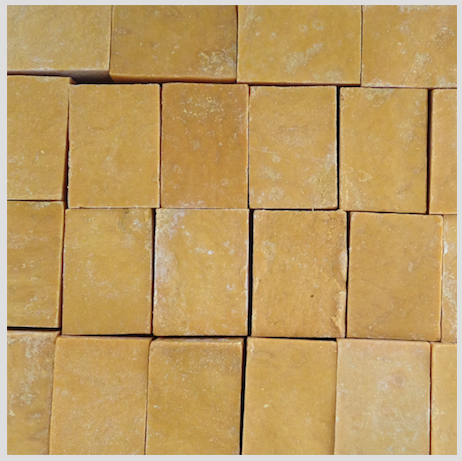
Mardin
AntiochiaThe only illuminated City of The Roman Empire, Antioch. Libanius, 'People of Antioch were sleeping on the roofs, where the summer breeze would gently stir the garments of the sleepers.' Babylon, King Hammurabi, 17 million fired bricks building The Temple of Etemenanki, 298 feet high, Nebuchadnezzer 11, took 43 years completing restorations. Discovery of an intact tomb at Taposiris Magna giving confidence of finding Queen Cleopatra, still today, two mummies of high status that would have been decorated in gold leaf. 1500 BC Egyptians invent The Sundial. The heavily guarded Persian Royal Road, 1677 miles, 111 Caravanserai. Göbekli Tepe, Upper Mesopotamia, 11,500 years. Oldest Bridge in The Ancient World, still today, The lost Palace, Temple of The Kings of Girsu. The Pegasus Mosaic, 160 shades of plant dyed stone, 2nd century AD, Antioch, 27 feet below ground level, adjacent Mt. Silpius. 85% of Babylon still remains unexcavated. 70% of UR, still remains unexcavated.
PLEASE NOTE : Antiochia, is now without Master Stamp, due to Master Stamps being lost in the Earthquake 6th February 2023 !

Mardin located on The Silk Route, The Persian Royal Road, the oldest City in Upper Mesopotamia, 40 centuries of Soapmaking, still making history, still today.
The Silk Route 2nd Century BC Chang'an, Capital of China, Han Dynasty- Antioch on the Mediterranean waters, 4025 miles, Seleucid Empire 323- 64 BC, 3rd largest City of The Roman Empire.
February 6th, 2023 7.8 Mw , Göbekli Tepe safe.
Göbekli Tepe, Upper Mesopotamia, Mesopotamia, The Germuș Mountains pre-dates Stonehenge by 6000 years, 7000 years before The Egyptians built Pyramids, first people of Upper Mesopotamia, 11,500 years ago, 115 centuries. Dated 9600 - 8200 BC pre pottery Neolithic : Monuments, Limestone T - shaped pillars 18 feet tall, carved with images of wild animals, used for social events, rictuals, funerals. The local origin of the stone is attested by Neolithic quarrying activities and workshop areas which have been identified on the adjacent plateau. The archaeological site of Göbekli Tepe is covered by steppe-like vegetation with grass and low shrubs, with a lone Mulberry tree (Wish Tree) on top of the mound dominating the scene, at least 12 other hilltop sites have now been investigated, discovering residences, discovering stone grinding, processing grains and vegetables, Unesco World Heritage Site, Göbekli Tepe, Upper Mesopotamia, Mesopotamia, The Şanlıurfa Archaeology and Mosaic Museum, 2 hours 54 minutes from Mardin, 121 miles and 7 hours 30 minutes from Nineveh, 332 miles by road travel.
Update : Göbekli Tepe, Mesolithic Temple, Stone Tools, limestone, grinding stones, hammer stones, processing grain, cooking porridge & brewing beer. Clearing work continues on the second layer, Tas Tepeler Project, 11,000 year old Sefer Tepe. The beginning of settlements in groups of 40 people.

Assyrian relief carving from Nimrud. Unexplained Telepathy; 3 handbags, the earliest depiction of this motif Göbekli Tepe, Upper Mesopotamia, a Unesco World Heritage Site : Sumerian handbags, Olmec handbags, Maori handbags, Egyptian handbags, Indian handbags, stone art handbags from the Americas, Australia and 3 handbags at Göbekli Tepe, Upper Mesopotamia, Unexplained Telepathy, a Unesco World Heritage Site or, supernatural spirits, holding a cone and bucket. The cone is described in Assyrian texts as purifier, purifying the gateway they guard. Liquid, a bucket of water ? keeping out the forces of chaos.
Just a few of The Story-Tellers - The Ancient Near East.

The Pegasus mosaic, 160 shades of plant dyed stone, Frescoes of Apollo and Nine Muses 2nd century AD, Antioch, authenticity preserved, still today, 27 feet below ground level, 4 acres of Antioch ( City of Antioch 1,100 acres, where the Soapmakers made history ). All mosaics, Caldarium, Tepidarium, Frigidarium below can be seen, still today, The Necmi Asfuroğlu Archaeology Museum, Hatay Archaeology Museum overlooking Mt. Silpius, 27 feet below ground level.
The Pegasus mosaic full photograph : Hesiod receiving his poetic inspiration from The Queen of Muses Calliope 2nd century AD, Antioch.


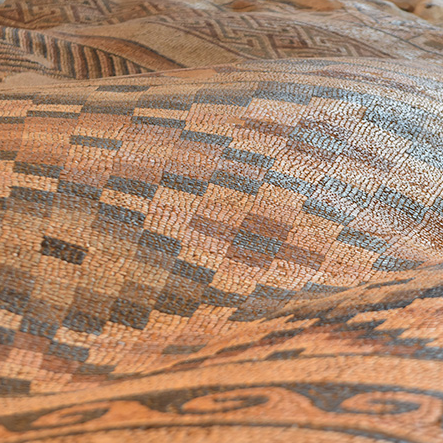
World's largest single floor Mosaic 11,302 sq ft, of different patterns, shades of colour, substantial Roman Villa, one large Roman floor mosaic, meeting place, observing its undulating flow, subsidence, earthquakes 4th Century AD, Antioch, overlooking Mt. Silpius, 27 feet below ground level.
Roman Villa mosaic 5th Century AD, Antioch.
Wildlife mosaic Roman Villa, 5th Century AD, Antioch.
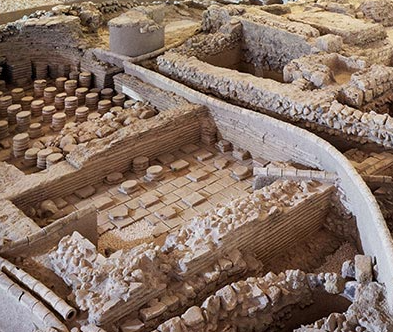

Hot room (Caldarium) flowing warm water creating steam, warm and cold rooms (Tepidarium, Frigidarium) followed by exercise, massage and food 5th Century AD, Antioch.
Roman Villa mosaic 5th Century AD, Antioch.
Stone surfaced Roman Road Antioch, authenticity preserved, still today, 27 feet below ground level, 4 acres of Antioch ( City of Antioch 1,100 acres, where the Soapmakers made history), 64 BC a Roman Province where a visitor was over-heard saying 'If you listen quietly you can hear their sandals on the stones'. The Necmi Asfuroğlu Archaeology Museum, Hatay Archaeology Museum overlooking Mt. Silpius.
Mardin, Upper Mesopotamia, Mesopotamia 4,500 BC, the most preserved architecture in the world, Unesco Tentative Listing.
Mardin : The Persians, Assyrians and Romans allowed the Soaps to travel, the abundance of Pistachios favoured by Assyrian Queens and Princesses for their hair, the preference of King Charles 111, 40 centuries of soapmaking, still making history, still today.
Celebrated Theatres of The Near East Aspendos Theatre, Pamphylia, a rich City trading salt, oil, corn, wine, horses, Emperor Marcus Aurelius 160-180 AD, seating 7300-7600, Architect, Zenon, son of Theodorus, paid for by two very rich brothers, A Curtius Crispinus Arruntianus and A Curtius Crispinus, preserved authenticity, still today, remarkable antiquity, famous for the Hydraulic Siphons bringing in water to the City, the construction of the tallest Aqueducts, Unesco Tentative Listing.
Breathtaking Palmyra Theatre, before destruction. Palmyra, the home of Queen Zenobia, an oasis in the Syrian dessert. The important link on The Silk Route, Unesco World Heritage Site, now continuing to stay on the 'The List of World Heritage in Danger'.
Aleppo
PLEASE NOTE : Antiochia, is now without Master Stamp, due to Master Stamps being lost in the Earthquake 6th February 2023 7.8 Mw !
Antiochia, Daphne : ancient Greek meaning laurel, spoken in Ancient Antioch.The Imperial Palace residence of Queen Zenobia, Antiochia, the preference of Queen Zenobia, just a short walk from the Soapmakers, Queen of Palmyra Empire, Queen of Syria, Queen of Egypt, ruler of one third of The Roman Empire (6 years, loved by her people). 40 centuries of soapmaking, still making history, still today.Hipparchus gives us Longitude, Latitude, Assyrians, Nineveh, Medical Encyclopaedia, 2,600 year old Handbook, thousands of descriptions, diseases, Pharaoh Hatshepsut, the Woman Pharaoh, giving 22 years of Peace, Ignatius, 2nd century AD, Bishop of Antioch, The Letter Writer, Priestesses who governed each City of Sumer known as Ensi, clever Sumerians more than 40 things, still today, we take for granted, Oil in Soap, the greatest Medical discovery in human history, still today, Sumerians gave us Cuneiform, 12 years to learn, Egyptians gave us Hieroglyphics, 4 years to learn, they also implemented Papyrus Reed : Writing, Painting, Rope, Reed Boats, Sandals, Baskets and The Sundial, Pergamum's, developed Leather and Parchment, the skin of sheep, goats for Writing material. The dry climate : Persians invent Qanats, underground tunnels bringing water from the mountains, Asbad (Windmill) 65 feet tall, 644 AD, a thousand years, south east Persia, Sistan, Baluchistan Provence, still seen today in Nashtifan, built of clay, wood, straw, horizontal drag force, moving turbines, turning the central mast, 120 day winds, Nish Toofan (storm's sting), grinding stones in a room below pressing grain into flour, even refrigeration, rudimentary air conditioning.
ANTIOCH : where the word Christianity began implemented by Peter and Paul who converted Gentiles to become Christians. Antioch the centre for the first Christians, the followers of Jesus. Antioch, the centre of the missionary of Paul. Peter digs the foundation of the first church Mount Staurin, Antioch (Unesco Tentative Listing), their missionaries were famous. They both suffered martyrdom under Emperor Nero, Rome.
Bible : Jeremiah 2.22, Malachi 3.2 Soap.

THE LIBRARY OF ALEXANDRIA, perhaps 400,000 Scrolls, perhaps more !

Impression of The Alexandrian Museum, The Research Institute Library, Museum 247 BC Ptolemy 1 Soter, instructs Demetrius of Phalerum, a Politician, Scholar, Orator, from Athena to build.THE LIBRARY OF ALEXANDRIA the innovation of Ptolemy 1 Soter which, became the jewel of The Ancient World, perhaps 400,000 papyrus scrolls. A second library was at The Temple of Serapis, south east of Alexandria, Greek writer Callimachus 305-240 BC observed 42,800 scrolls which, were copies of the scrolls at the The Alexandria Museum, Library. Ephesus, Celsus Library housing 12,000 Papyrus scrolls was becoming so famous in competition that the rivalry between the two libraries was formidable where respect for Greek Culture was unstoppable. Earlier, The Library of Pergamum, 200,000 scrolls, 3rd century BC was also having polemic moments with the Egyptian Ptolemaic dynasty. Later, Mark Antony bequeathed the Pergamum collection to Queen Cleopatra. When Alexander the Great died in 323 BC, his empire stretching from Macedon to the western border of India was divided into three dynasties: Antigonids, Seleucids, and Ptolemies. All of the kings of Macedonia competed to become the commander’s rightful successor. The struggle for royal supremacy spilled into scholarship and preservation of Greek culture, giving way to a new wave of elaborate libraries.The Egyptian Ptolemaic dynasty stopped shipments of papyrus (called tjufy by the Pharaohs) to Pergamum. Although stretched leather was discovered previously in the east, The Pergamum's developed leather and parchment (the skin of sheep, goats), as writing material. The word parchment evolved (via the Latin pergamina and the French parchemin) from the name of the City of Pergamum.

Nablus
Aleppo
Mardin : Laurel Berry, Pistachio oil 200g : Olive oil, Laurel Berry 180g.
Mardin
Aleppo
PLEASE NOTE : Antiochia, is now without Master Stamp, due to Master Stamps being lost in the Earthquake 6th February 2023 7.8 Mw !
That Special Gift : an original cultural gift. The Ancient Near East, Short Stories, Maps, Sketches, Photographs, Where Time Began, Antiochia : lasting 3-6 months, the first moisturiser of the world, leaving skin Silky, The Preference of Queen Zenobia 3rd century AD, Imperial Palace, still today. Book, Ancient Soap, Ancient History in box, Click Store and scroll.
The Silk Route, Chang'an 2nd Century BC, capital of China, Han Dynasty observing thirty three listed names : capital cities, palaces, Khan Kingdoms, trading settlements, Buddist cave Temples, ancient paths, beacon towers, parts of The Great Wall, fortifications, religious buildings, Where The Silk Route Began, Chang'an - Tian-Shan Corridor a Unesco World Heritage Site.

Sumerians : 60 parts, Babylonians : 60 seconds, 60 minutes, WHERE TIME BEGAN, where children of the world need to know. Sumerians : The concept of Time.
The presence and importance of The Silk Route 2nd Century BC where oil in soaps travelled from MARDIN (near the Persian border), ALEPPO CITY and just a short distance from The Imperial Palace, ANTIOCH to be traded in Antioch Market, later in the 10th century AD NABLUS soap from PALESTINE continued history at Antioch Market the finest first pressed olive oil from olive groves of 5000 years, still today.
ANCIENT MESOPOTAMIA : continuing the ethical and sustainable ethos, the culture and spirit of the first Soapmakers of the world remarkably, still handmade today from the original historical areas whilst supporting their families.

For one hour talk and presentation, dinner parties, please click contact page and scroll.info@ancientmesopotamiagifts.com
ancientmesopotamiagifts.com

Rome : 753 BC.Rome was built on seven hills, known as 'The seven hills of Rome', Esquiline, Palatine, Aventine, capitoline, Quirinal, Viminal, Caelian.
Roman Road Making began 334 BC, 53,000 miles of Roman Roads were built at the peak of The Empire, radiating from Rome connecting Empire.
476 AD End of The Roman Empire.
1453 AD End of Byzantine, Roman Empire.



BOOK : SHORT STORIES, MAPS, SKETCHES & PHOTOGRAPHS. Please click store and scroll.
STILL TODAY, THE ANCIENT NEAR EAST, THE ASHMOLEAN MUSEUM
The medieval market place, WELLS, Wednesdays, Saturdays, surrounded by Wells Cathedral 1175, The Bishop's Palace 1210, The Moat of the Swans, 14 acres, partnered with RHS, of tranquil gardens, Vicars Close 1363, the oldest continuously occupied medieval street Europe, Flagstone Drawbridge, Portcullis, Ruined Great Hall, The Well Pools, Vaulted Undercroft, Long Gallery, Arboretum, England's smallest City. ANCIENT MESOPOTAMIA, for that original cultural gift : beautiful framed MAPS, BOOK : story of SILK, NEAR EAST, ALEXANDER the GREAT, ROMANS, GREEKS and 4000 years of SOAPMAKING, still today, silky, lasts for months, HISTORY in box.
